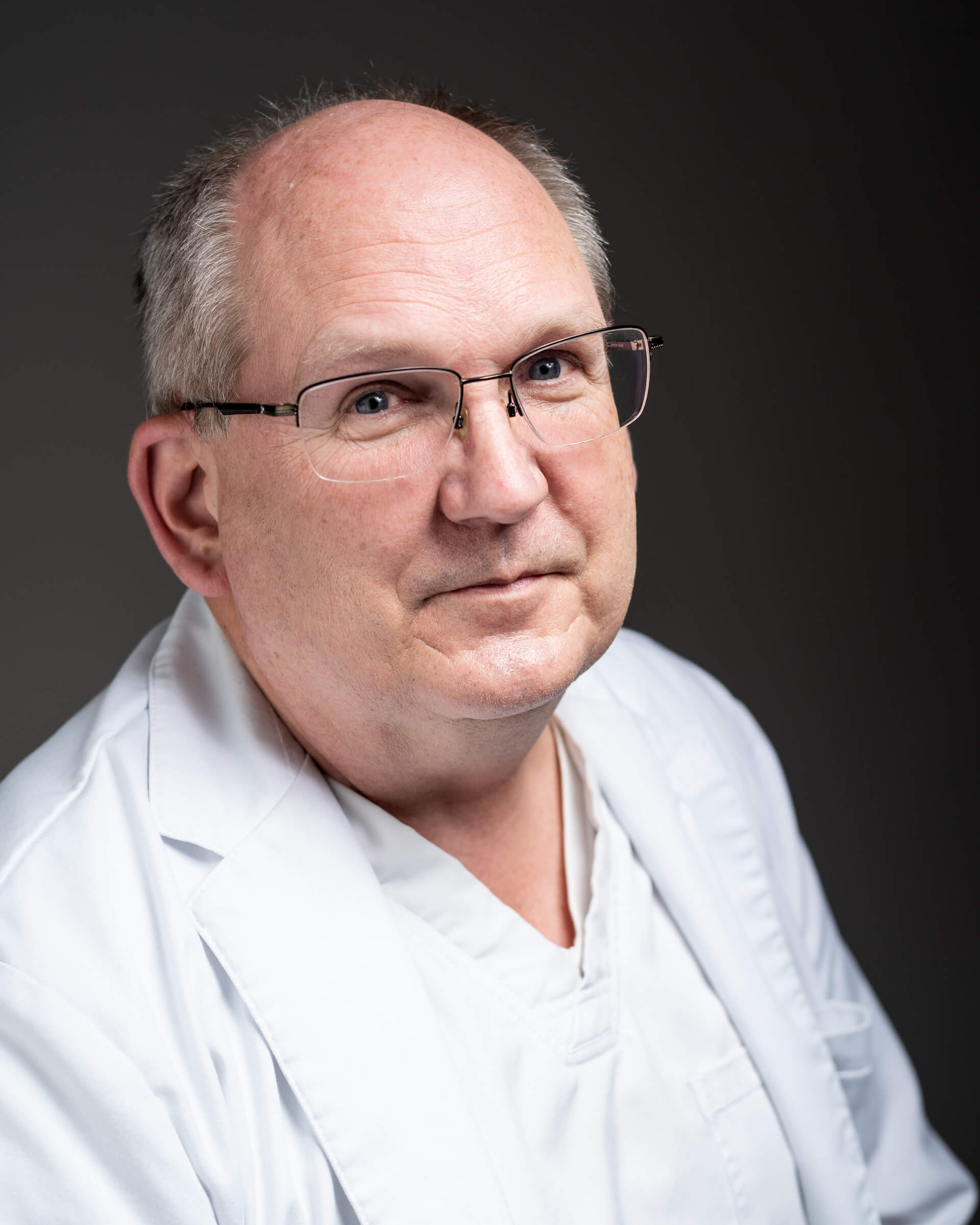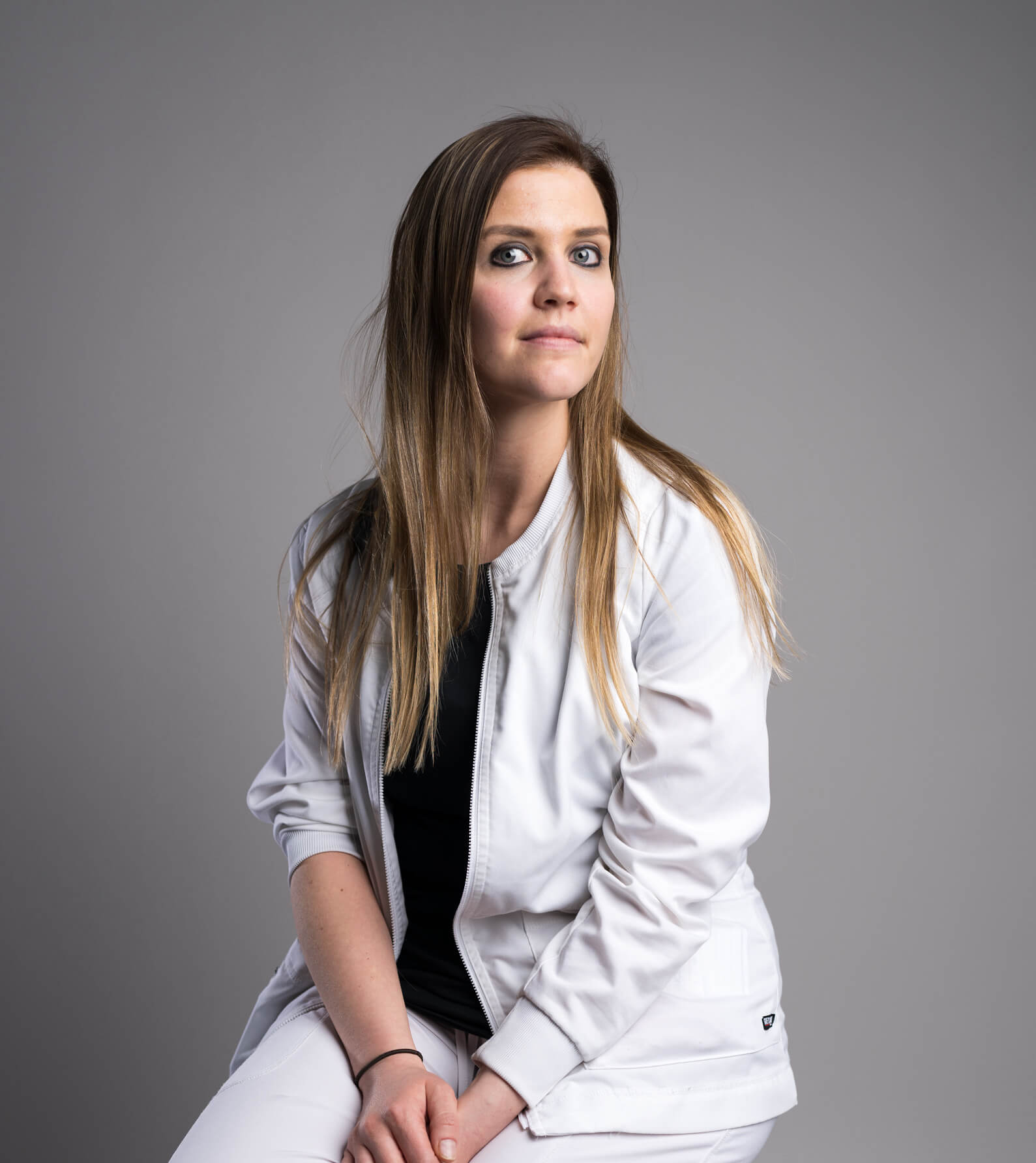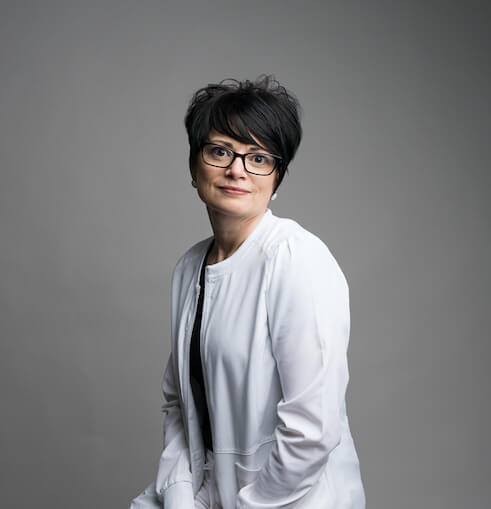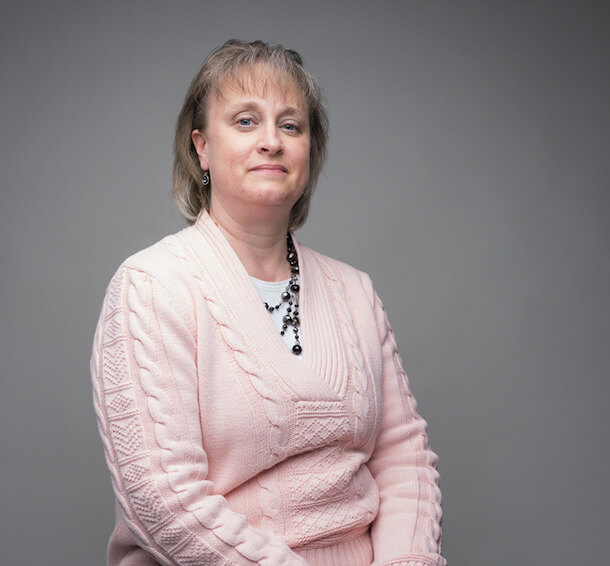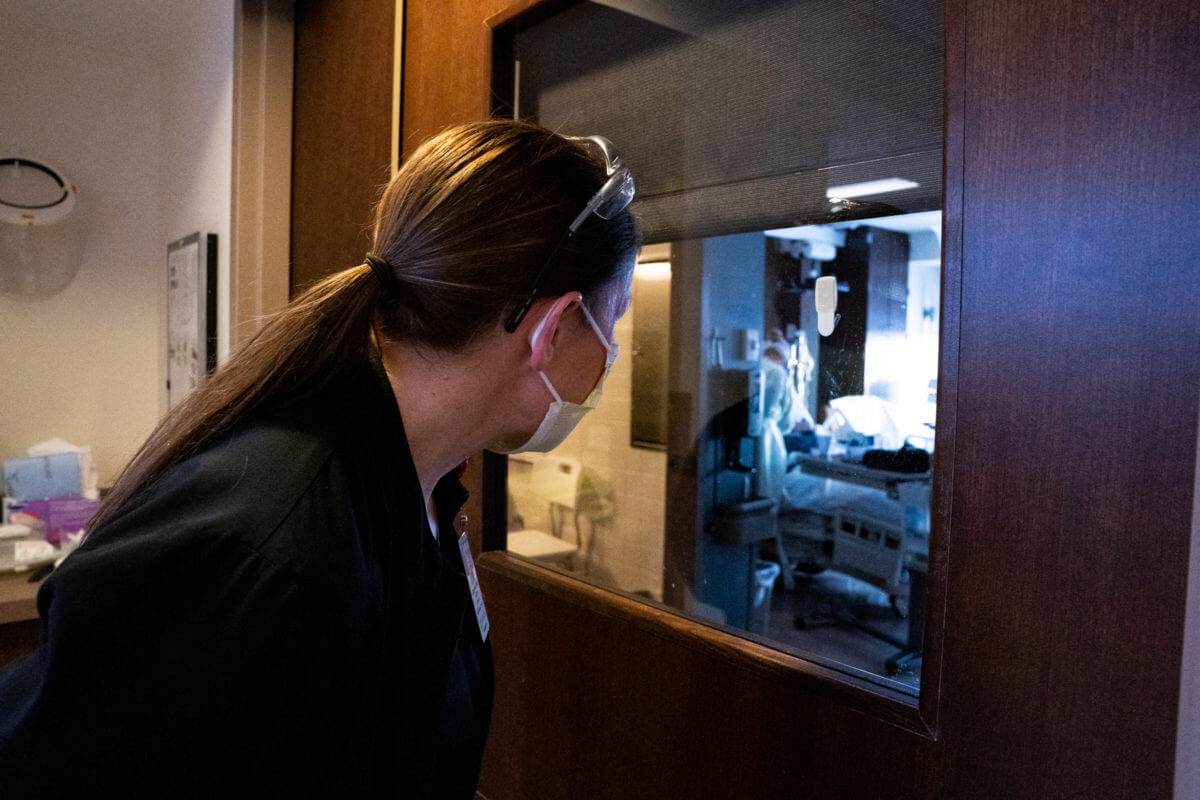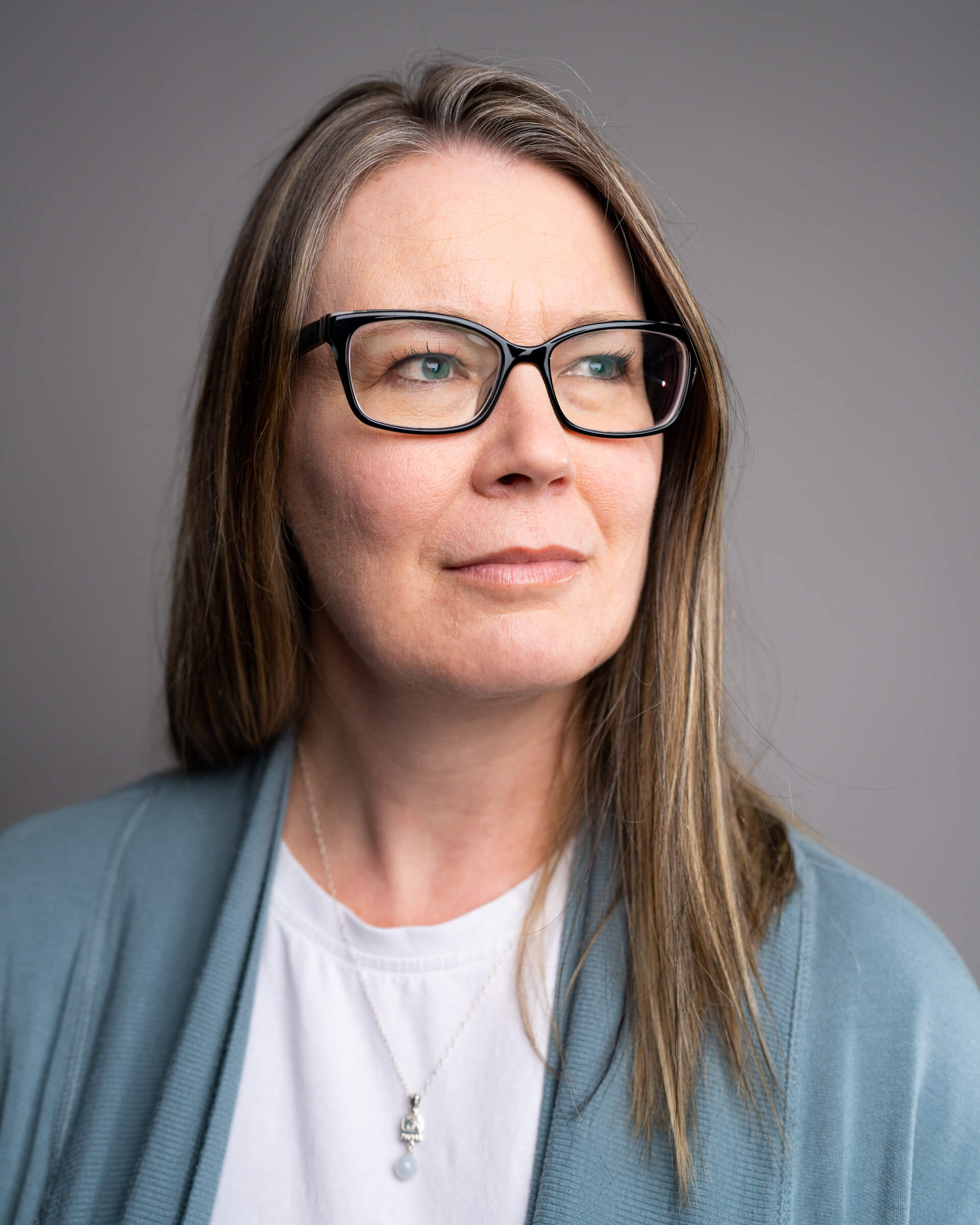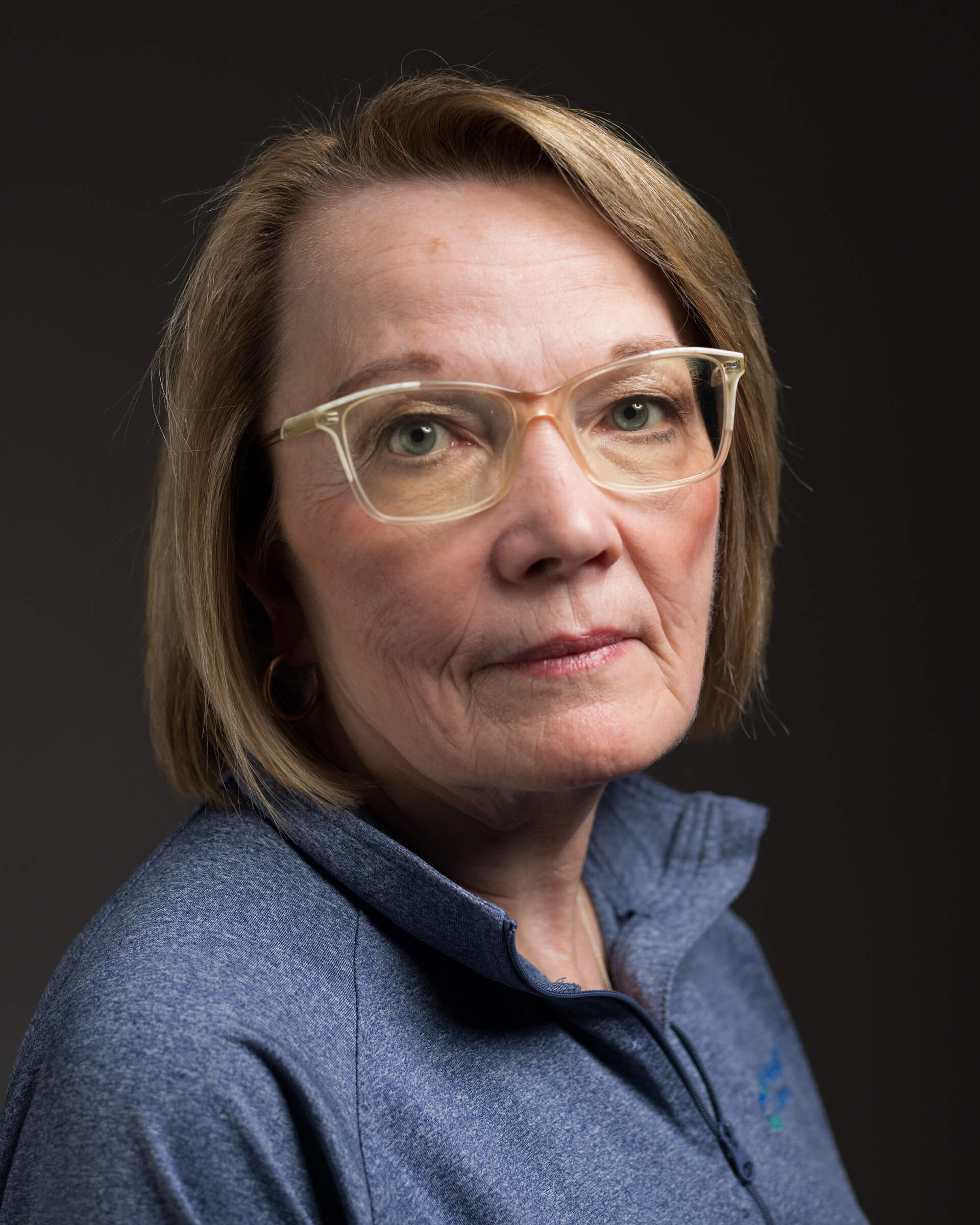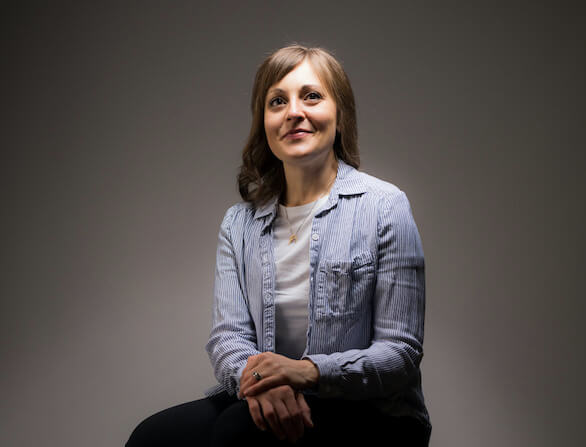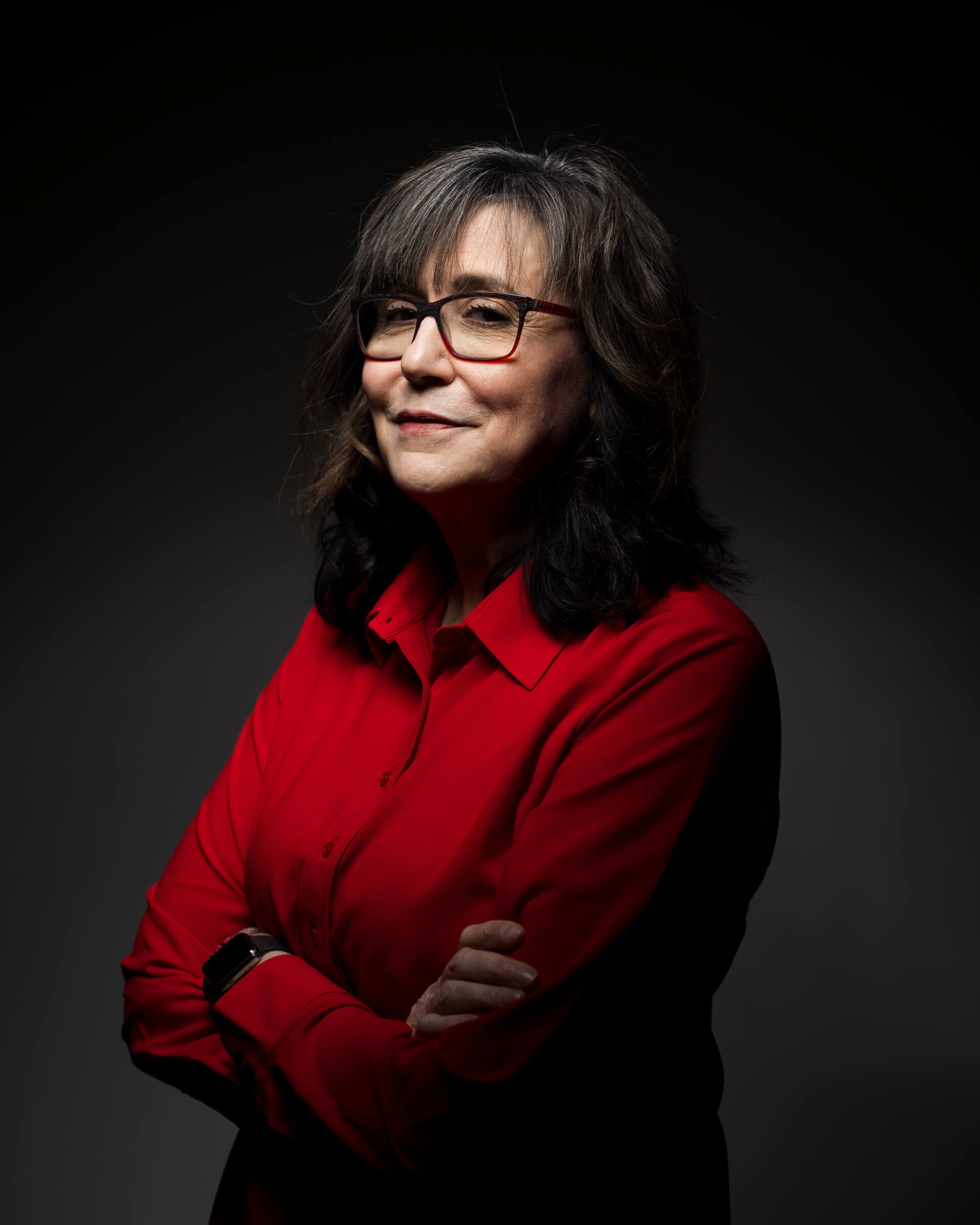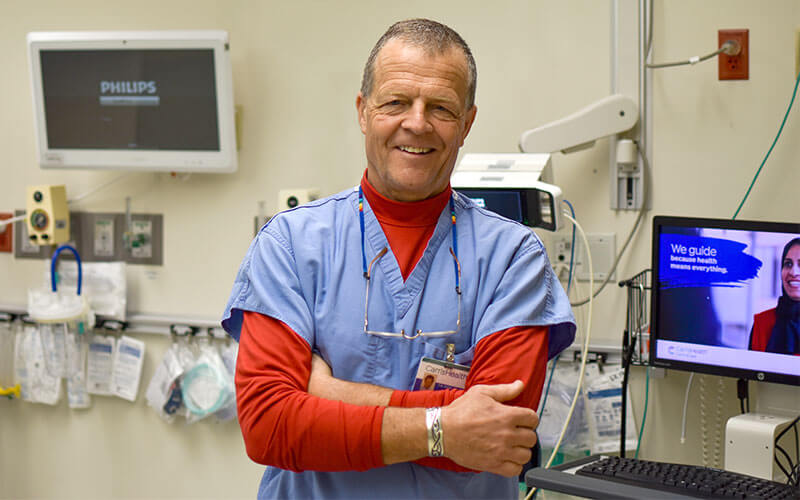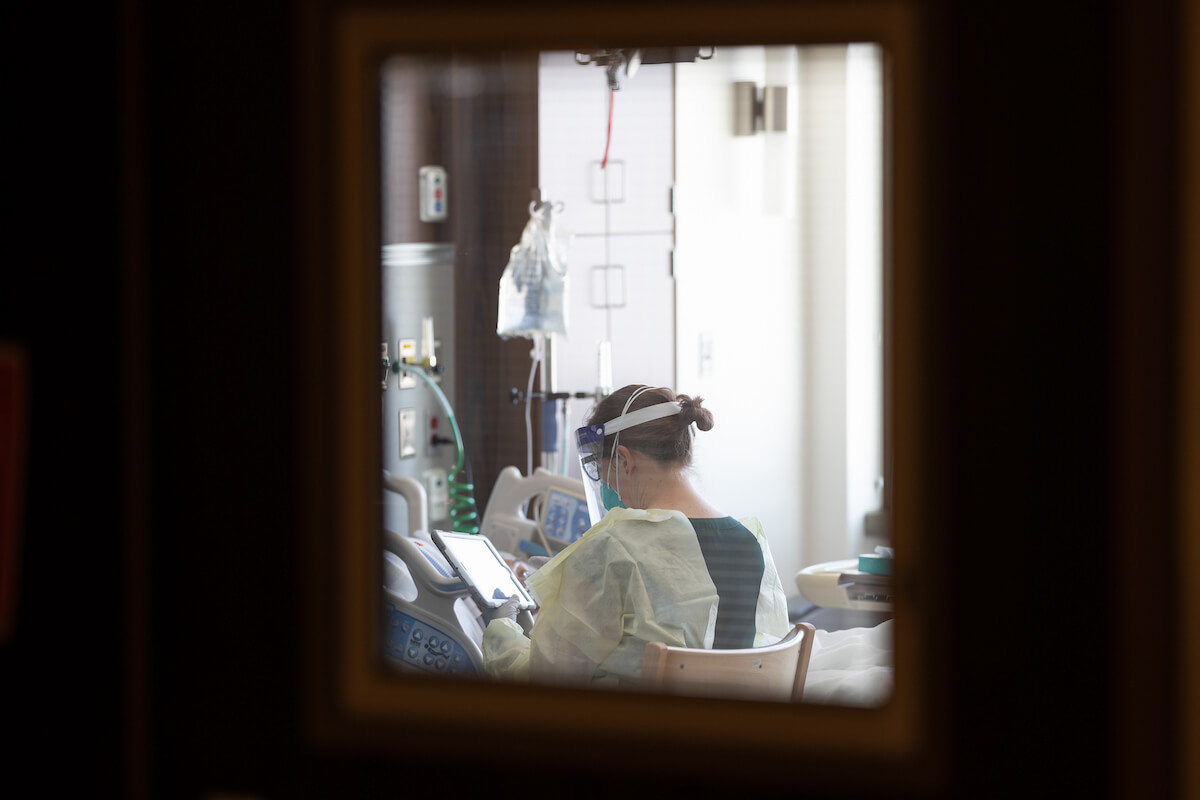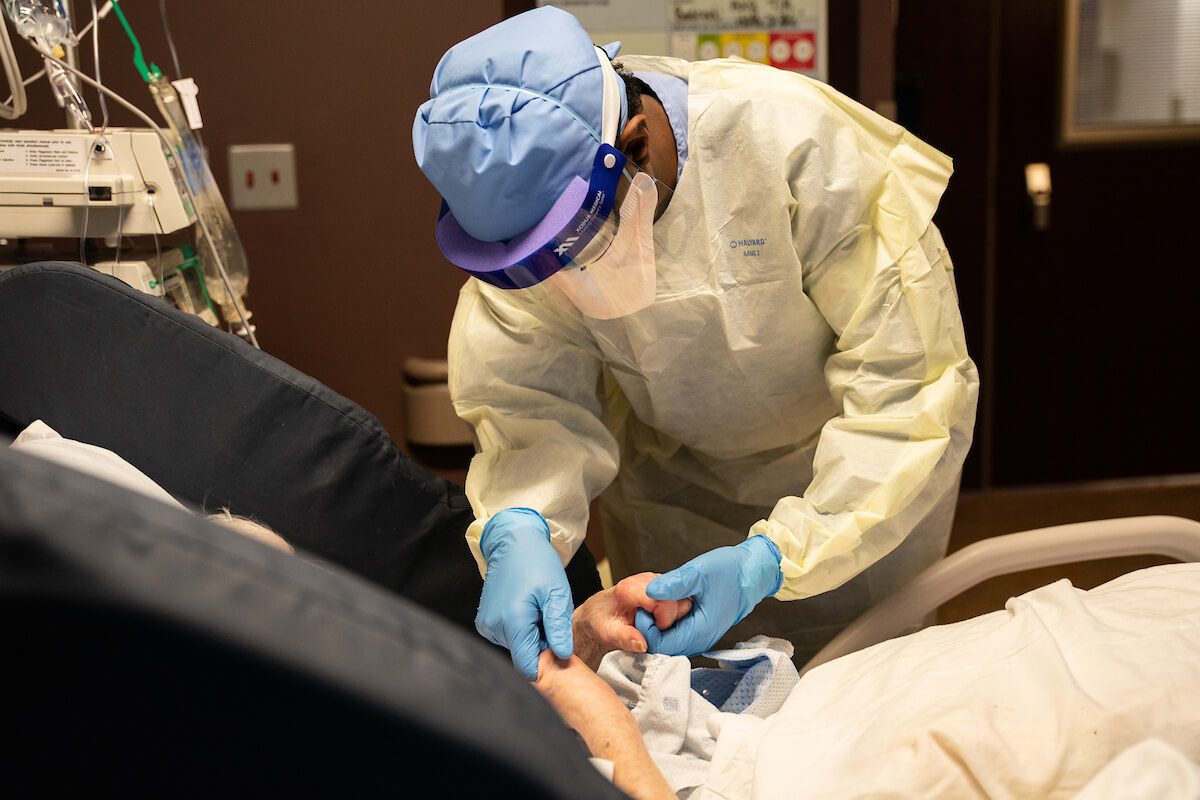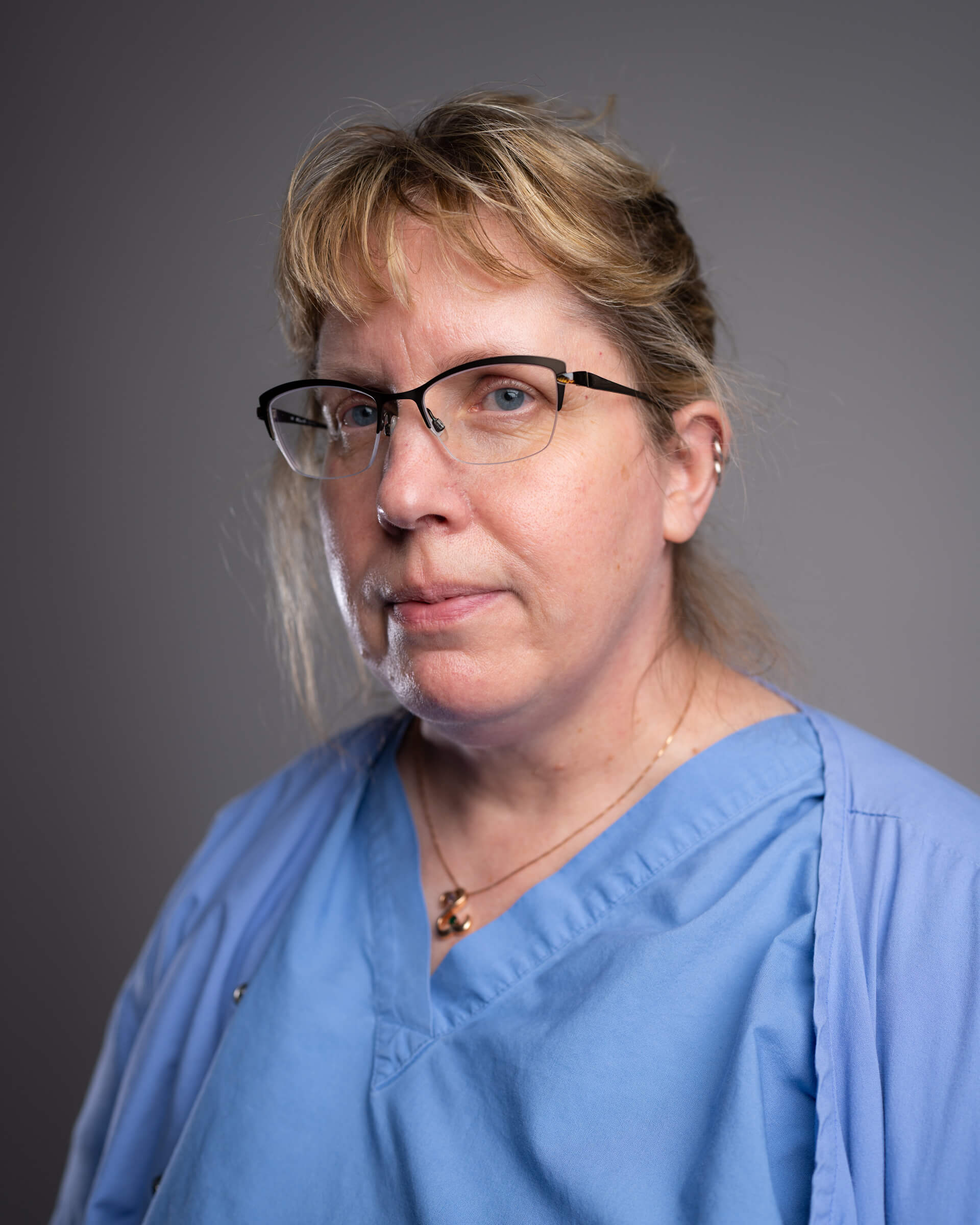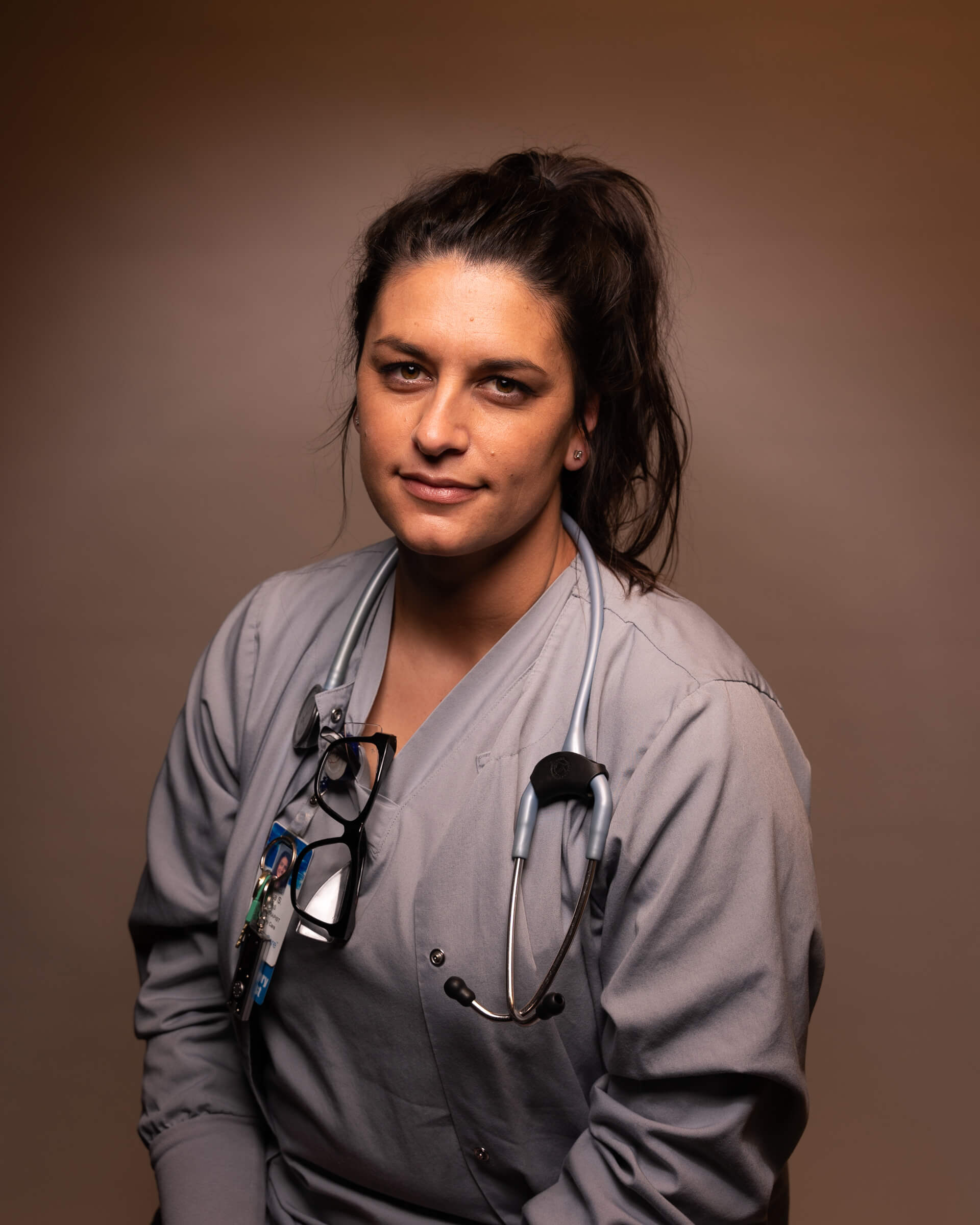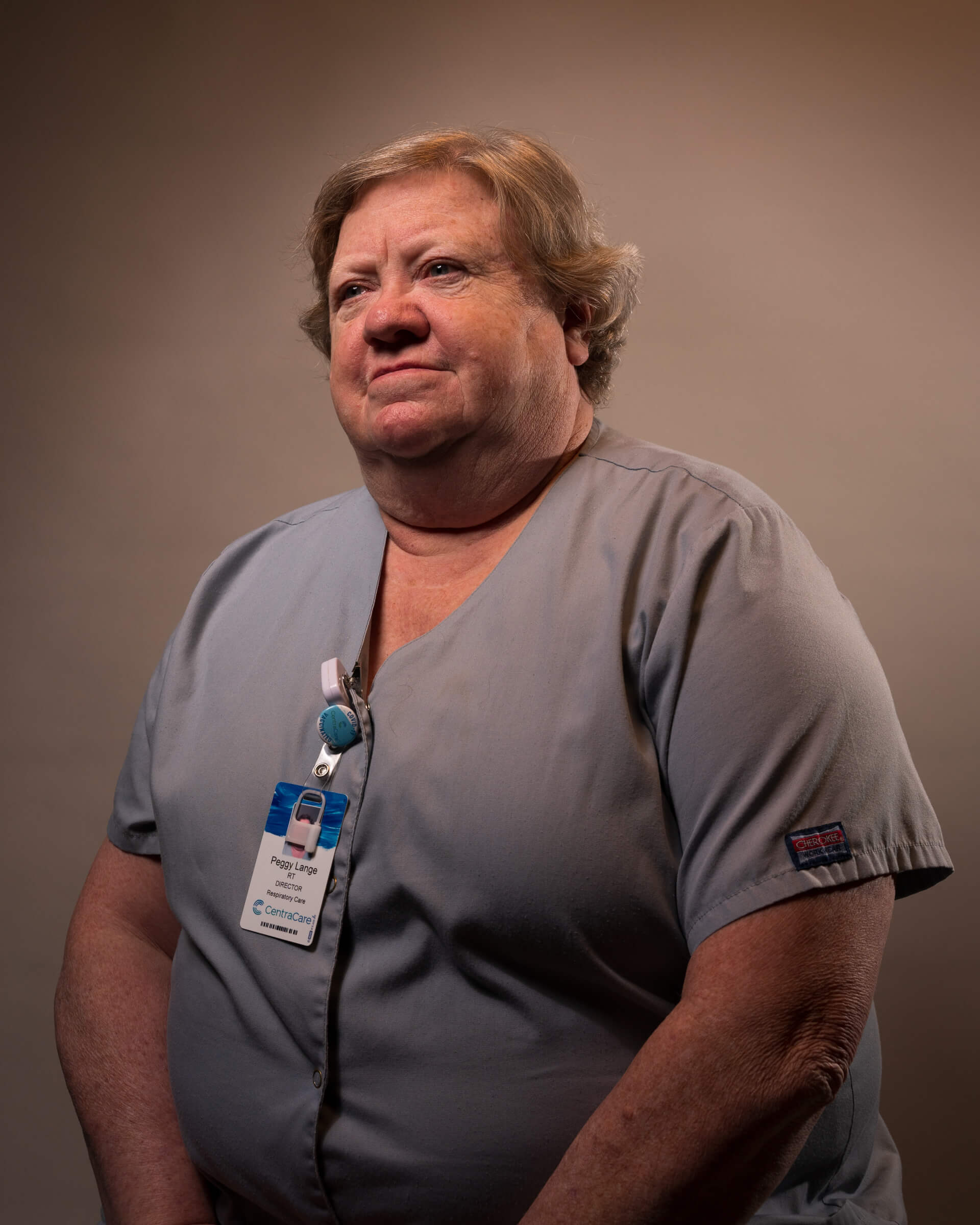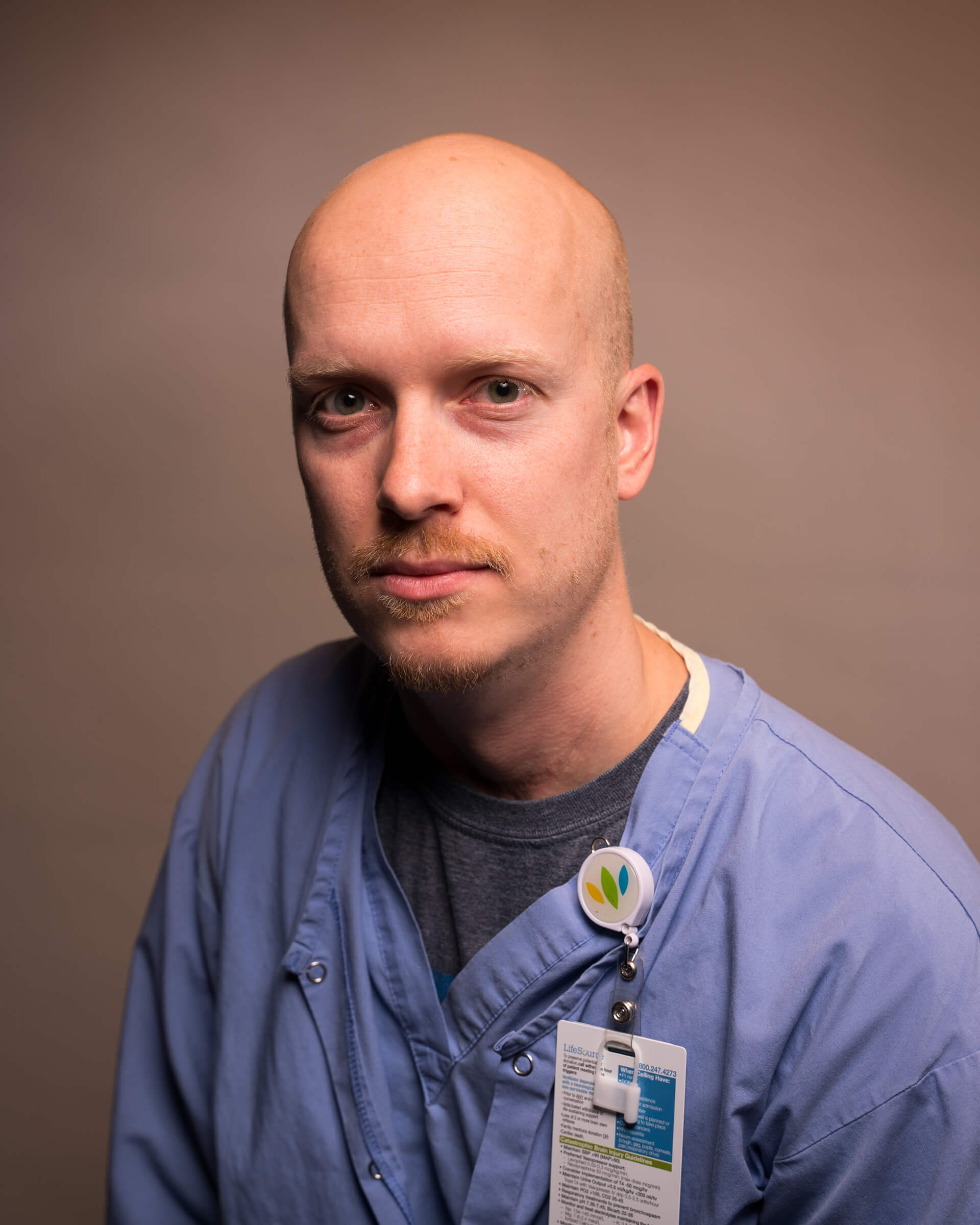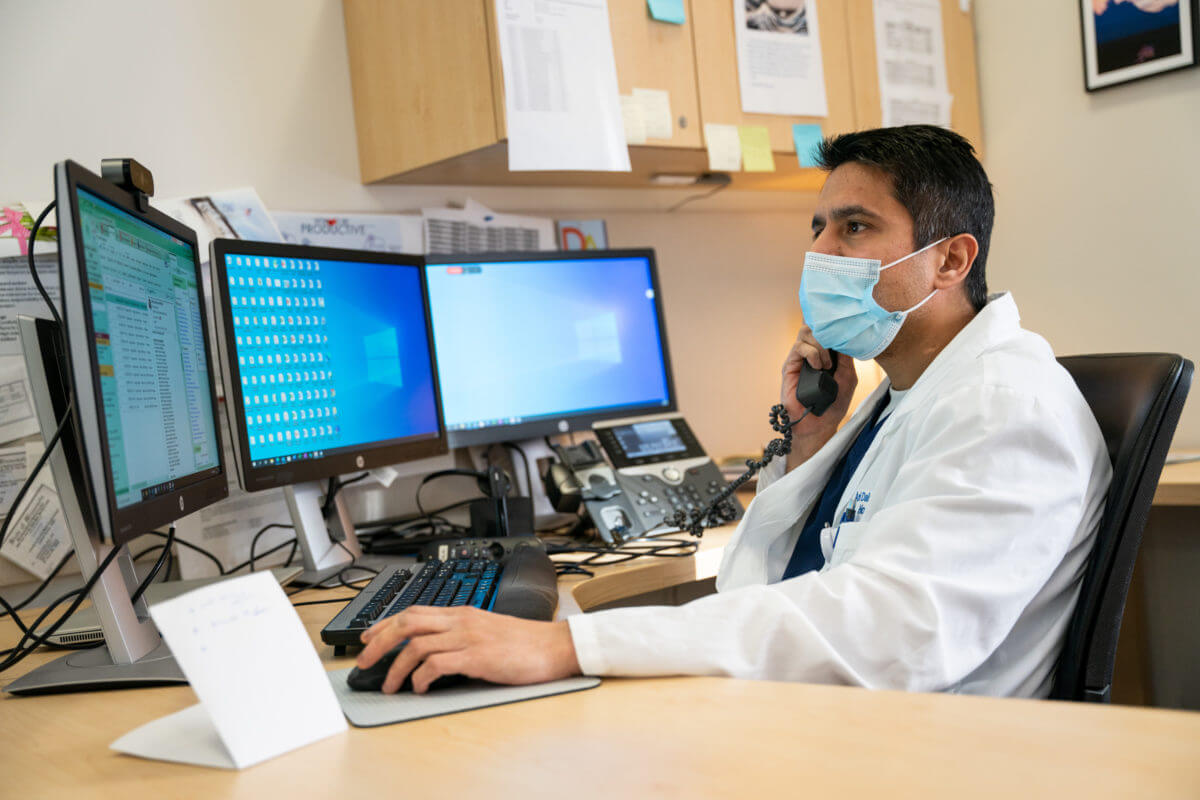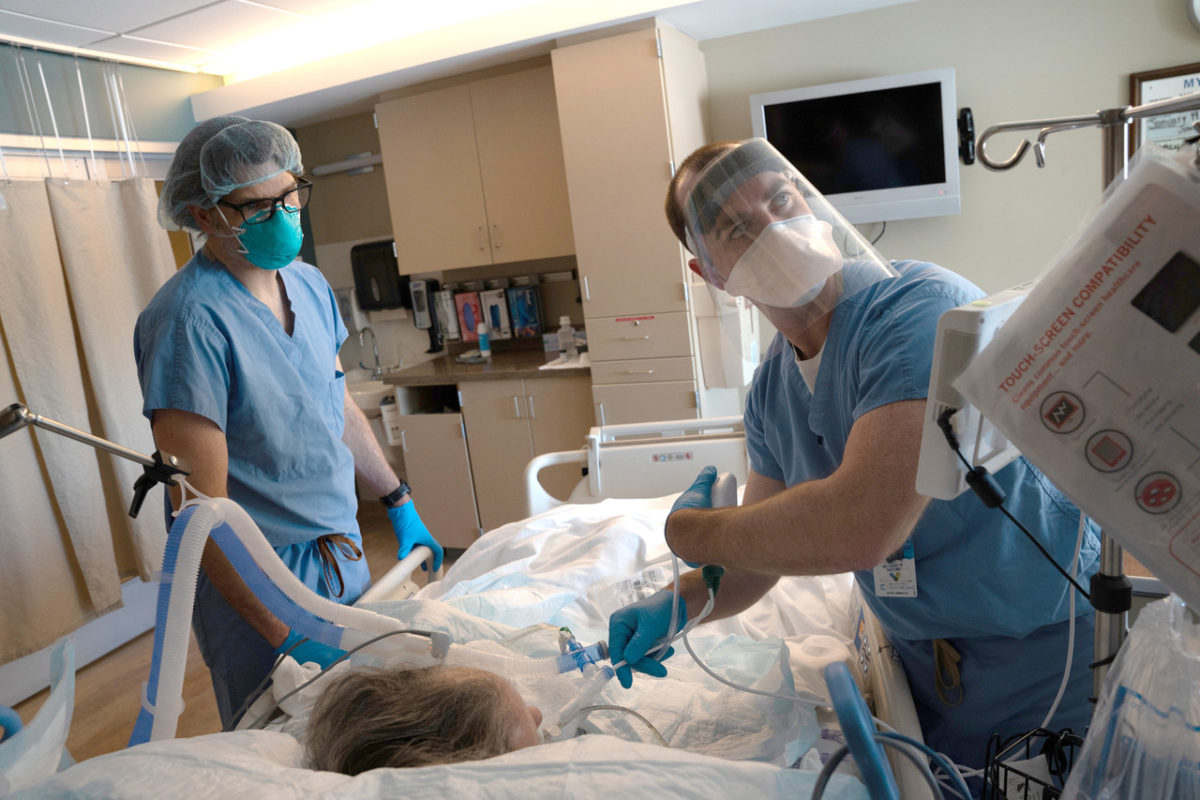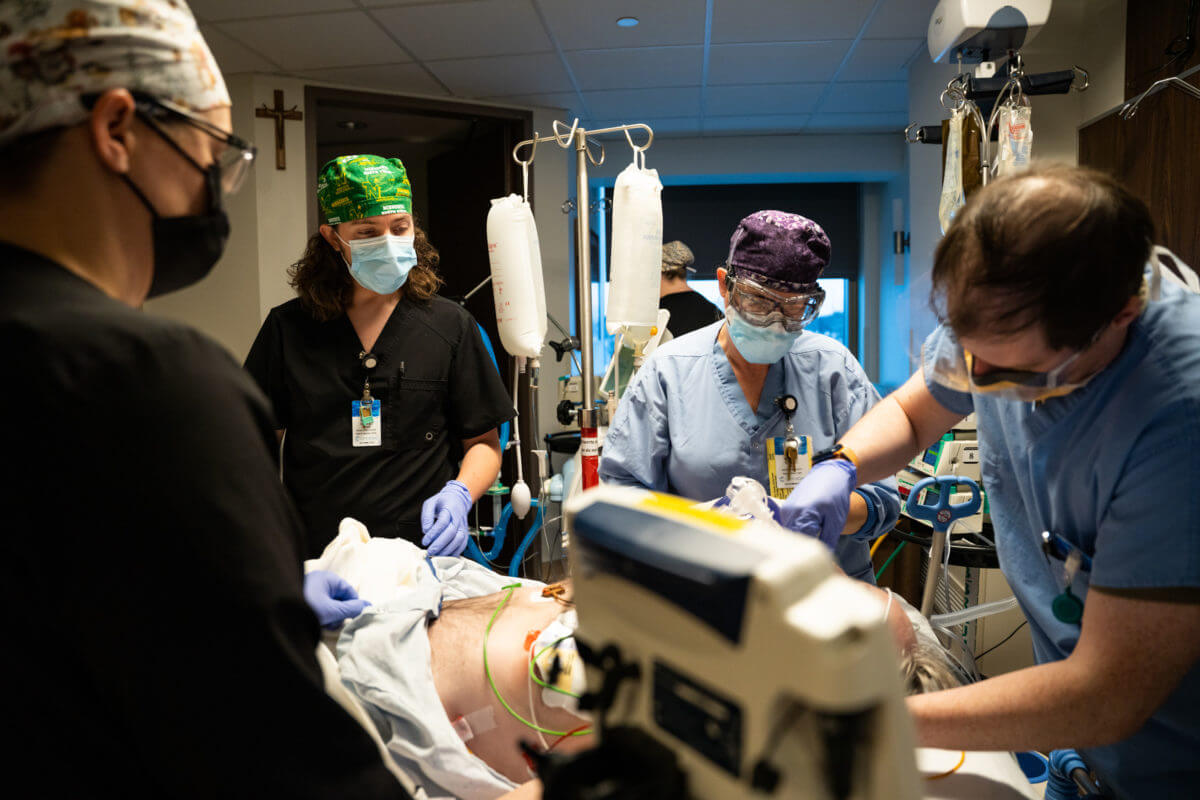We Persevered…
Together
We lived so many stories the last two years
Heroic Efforts
During the past two years, teams have given heroic efforts and sacrificed so much. And while COVID continues to impact our lives, we are looking ahead to a brighter future.
Whether we work in the ICU or Supply Chain, whether we’re in St. Cloud or Willmar, and whether we are onsite or remote, we all have a story to tell. Here we share those stories to honor what we’re accomplishing together.
Phones were ringing nonstop as doctors around the region pleaded with nurse supervisors to take on more critical patients. The work was like a complex puzzle – with supervisors attempting to move all the pieces into the right places so that everyone had what they needed. All while the hospital was strained far beyond its capacity.
You never were sure that was going to be the last ICU patient that needed a bed.”
Paul Reisdorf, Administrative Nursing Supervisor
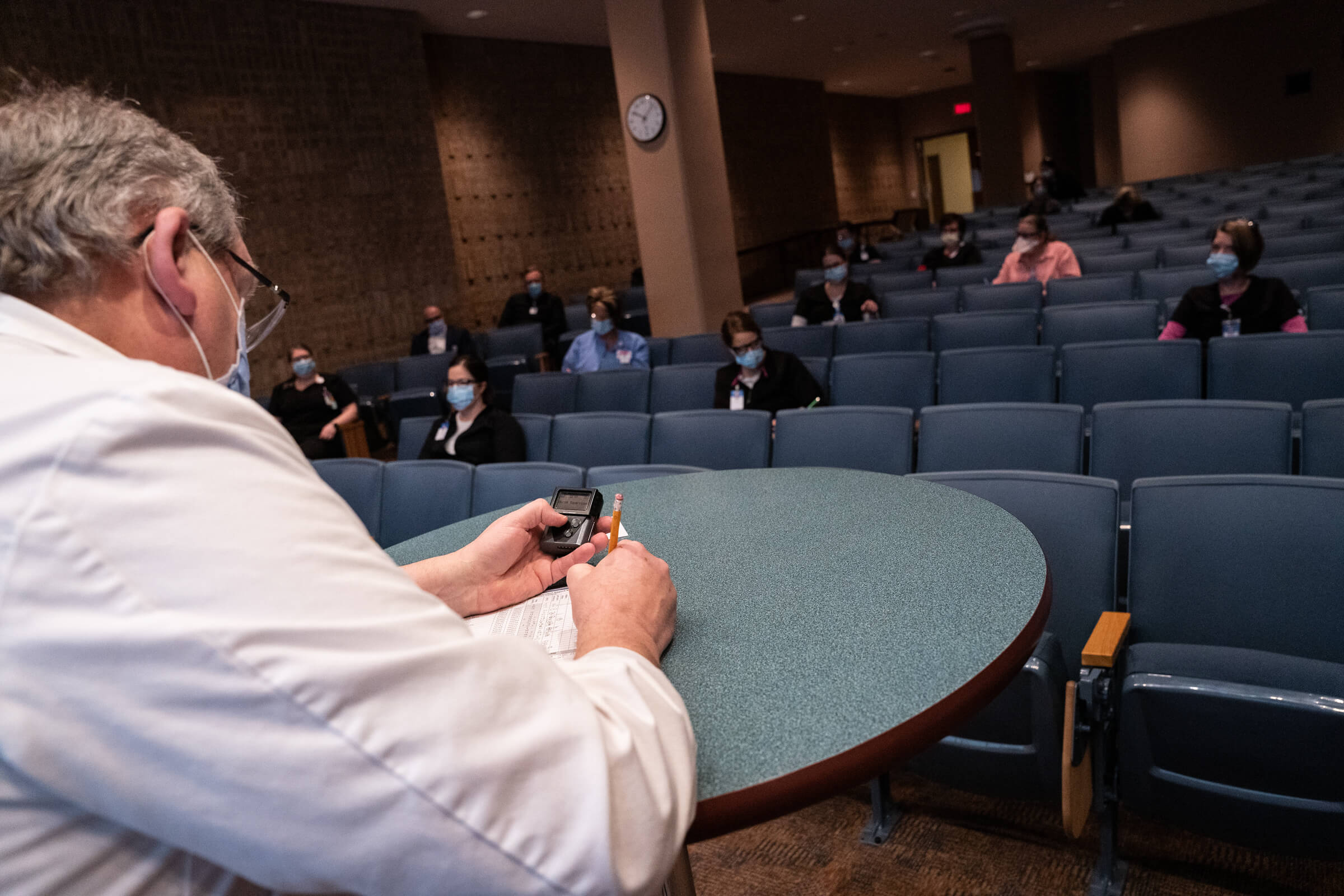
No Beds
An impossible situation
Our Voices: Nursing Supervisors
Nursing supervisors have a unique view of the hospital – they communicate across care units and can see whee staffing is low and where there’s a surplus. Listen to their voices and read their stories as they share their experiences during the past two years.
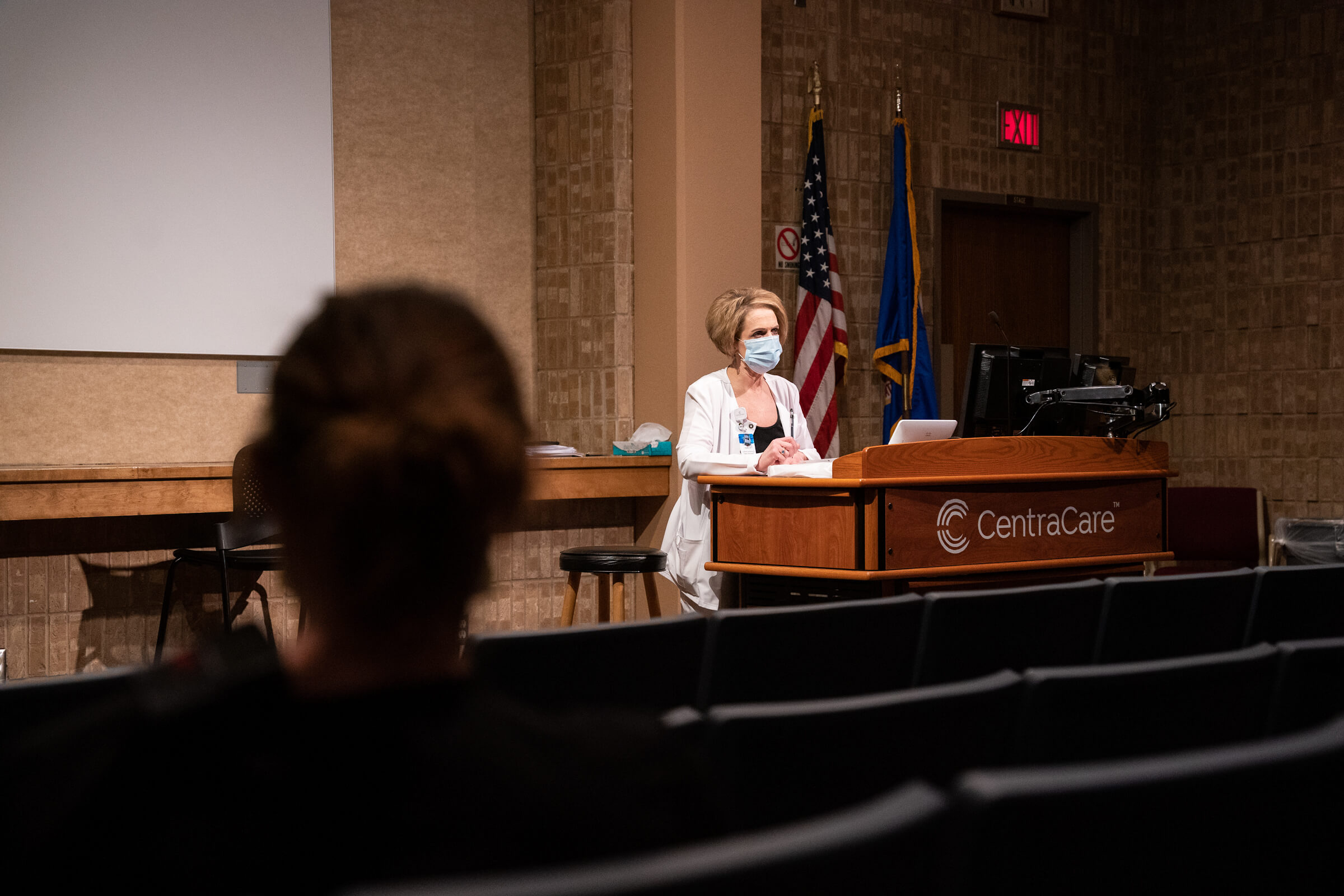
What We Went Through
My heart will feel it forever.
The shift starts at 7AM. Two of her four kids need to be dropped off at two different schools before the 40-minute commute to St. Cloud Hospital. That means her little ones get a 5:30 AM wake-up. By then, Libby Wenderski has already been up for an hour to get her day started with some exercise.
Libby is an RN and the manager of the Medical Progressive Care Unit (MPCU) at St. Cloud Hospital. “One of my big goals through all of this was to not lose sight of myself and exercise has helped with that,” Libby explains.
It’s amazing the impact you can have on your kids when you’re positive, so I try to do that. I’m not perfect at it, but I try.”
Libby Wenderski, RN and manager of the Medical Progressive Care Unit
From Family to Work Family
A day in the MPCU

Libby’s Story
One of my big goals through all of this was to not lose sight of myself and exercise has helped with that.
I’ve been a runner since the third grade. Exercise has benefited my physical and mental health by keeping me centered.
Eileen’s Story
Eileen has been a housekeeper at CentraCare for close to ten years. Her colleagues describe her as a bright spirit, down to earth and full of gratitude. You can often hear her laughing down the hall as she chats up nurses and patients alike, spreading cheer wherever she goes.
As St. Cloud Hospital quickly filled with COVID patients, doctors and nurses at regional hospitals were spending more and more time on their phones trying to find a free bed for a patient in dire need of treatment, whether it was for COVID or something completely unrelated but equally critical.
Do you have a bed? We can’t take care of this patient. He needs more than we’re doing. It just was so frustrating and difficult.”
Ulrika Wigert, MD, family medicine physician in Sauk Centre
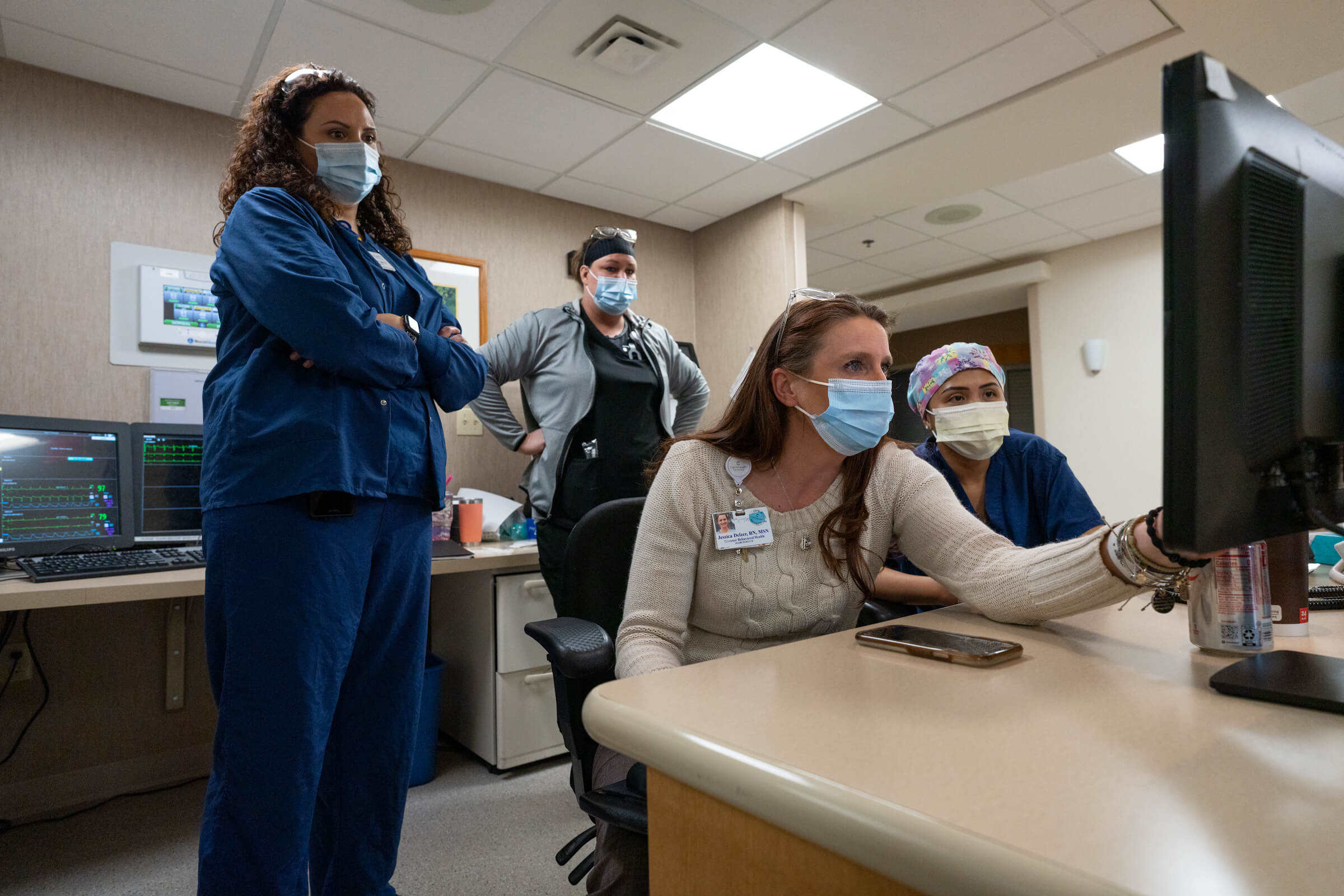
Regionals
Miles apart but at the center of everything
Our Voices: Regional Caregivers
Regional caregivers faced some of the most challenging situations during the pandemic, stepping up when their communities needed them most. Listen to their voices and read their stories as they share experiences from the past two years.
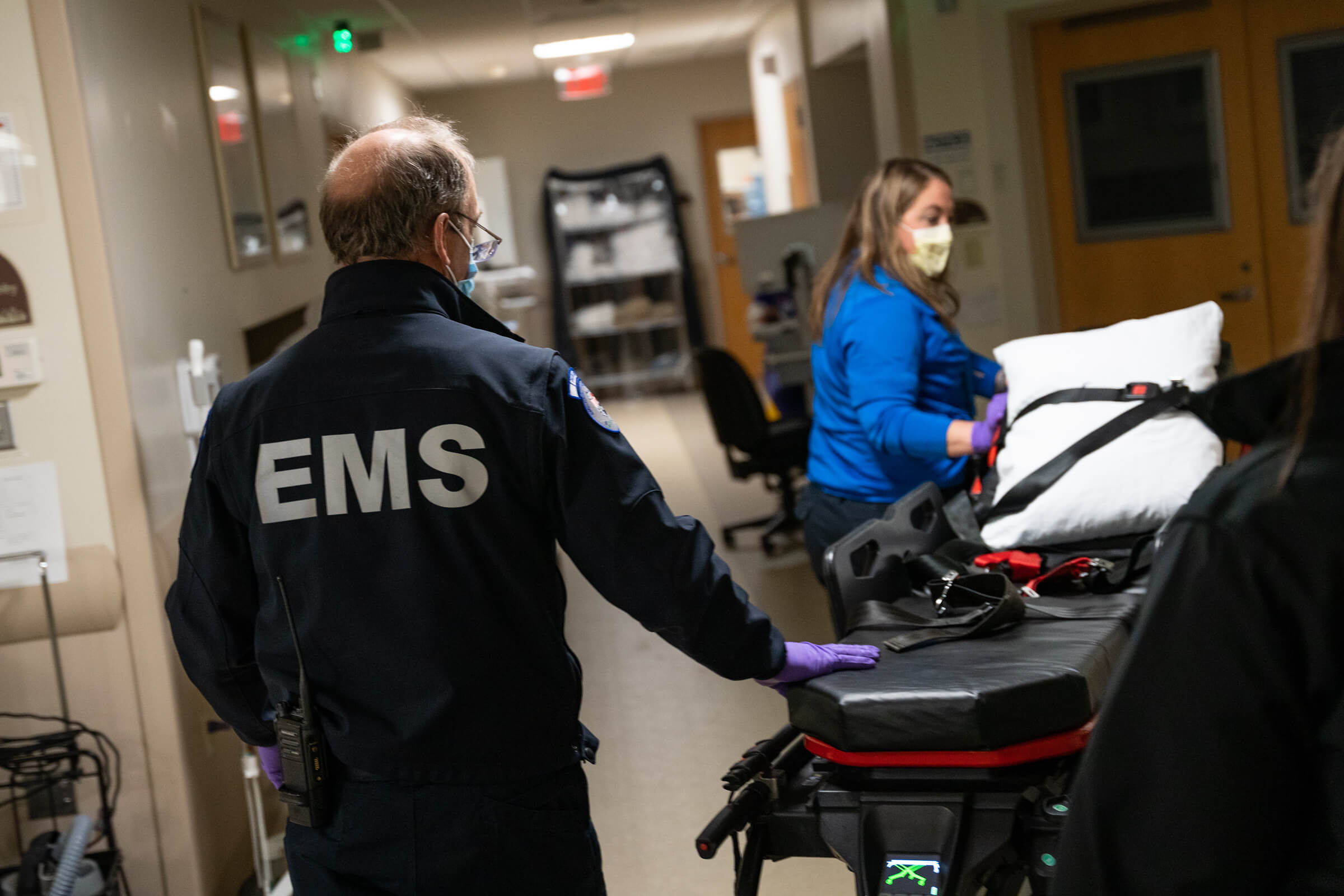
COVID Collaboration
Exhaustion leads to innovation
Amidst all the challenges of the pandemic, staffing was near the top.
At the center of it all was the staffing office. This team of 15 people handles staffing for 25 different units throughout St. Cloud Hospital, fielding calls, connecting with charge nurses, and on the hardest days, pleading for help through “red alert” messages to fill a growing number of open shifts.
About half of our team has experience working on the units, including myself. So we’ve been there and we don’t want any unit to be understaffed.”
Brenda Greeley, staffing office supervisor
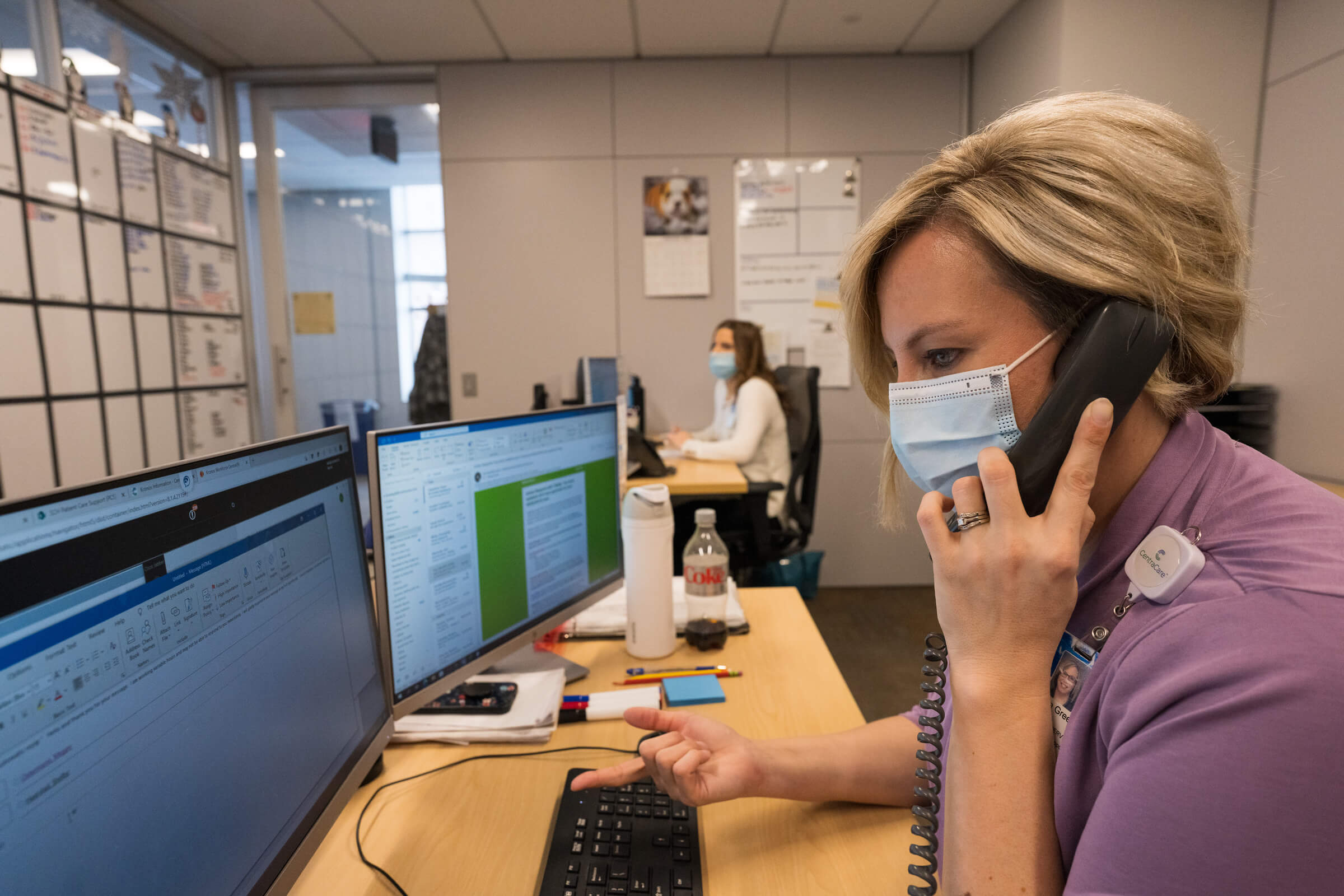
Office of Staffing
A great big puzzle
Our Voices: Hospitalists
Hospitalists are vital members of care teams with wide-ranging responsibilities, including admitting, rounding and coordinating care for patients. Hear their voices and read about their experiences from the past two years.
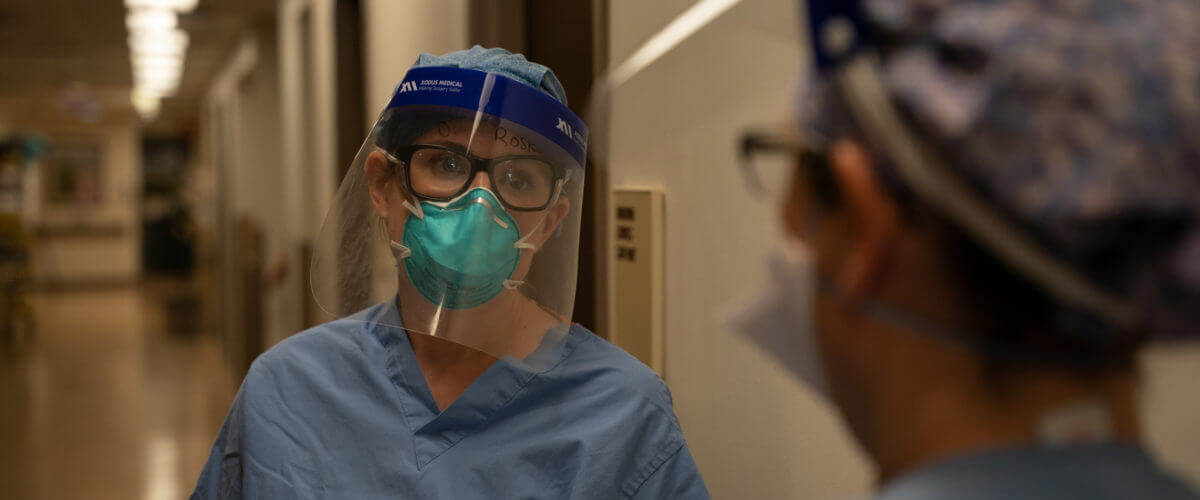
The reckoning
A perspective from Jessie Roske, MD
Our Voices: Respiratory Therapists
It took all of us these last two years to serve the needs of so many. And we all have a story to tell. Think back to the number of times you heard something in the news about Respiratory Therapists — the unsung heroes of the pandemic (though there were others, too). Listen as our own RT’s tell their stories and give us all a glimpse at the frontlines of COVID.
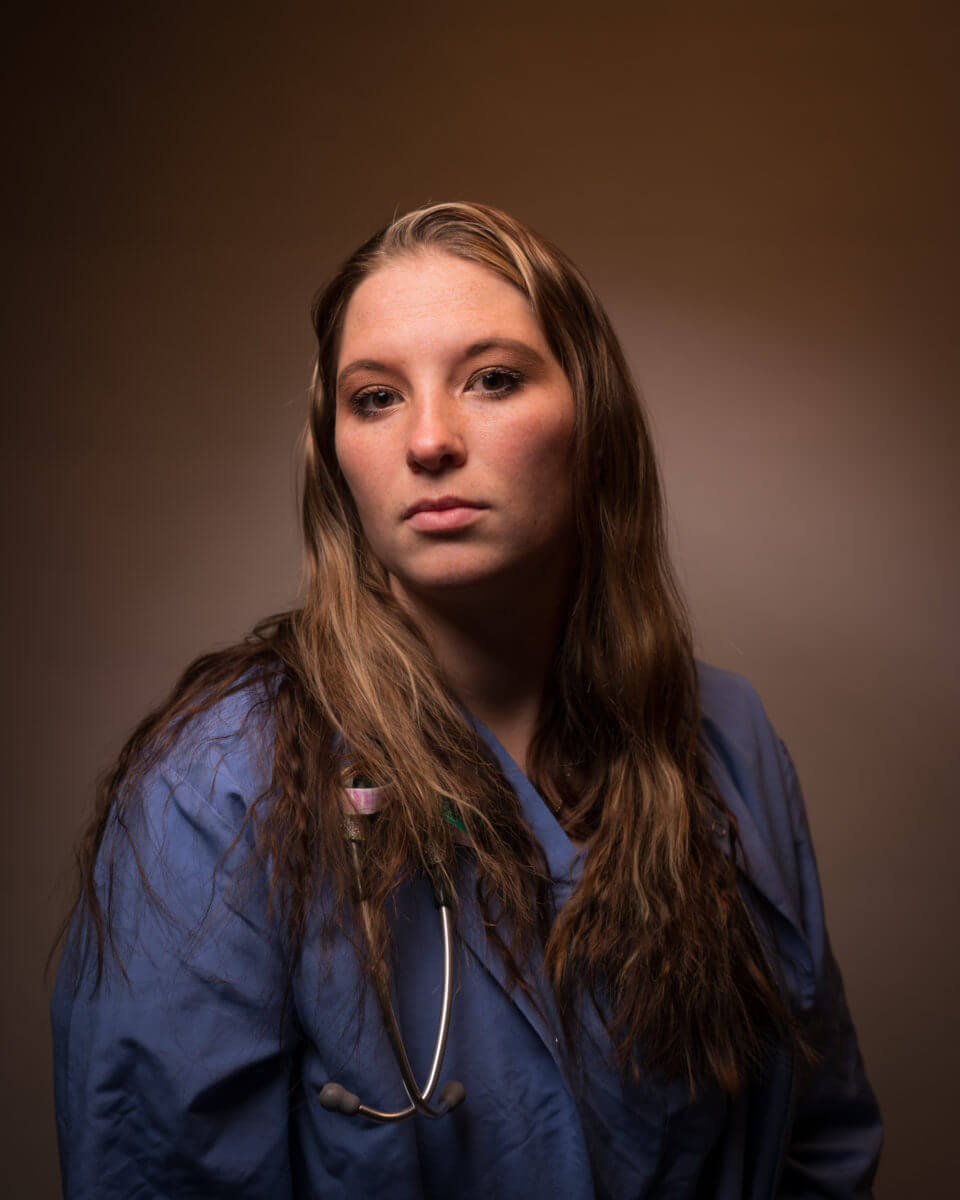
Kati Jo’s Story
COVID just hits your lungs and takes your lungs out. It’s miserable. I’ve held so many hands, hugged so many people and promised to be there for them. It’s just been heartbreaking. It’s been the hardest thing I’ve ever dealt with. I’m not an emotional person, but I probably cry after every single one of my shifts. We have dealt with more death in the last two years than my entire 10-year career in respiratory.
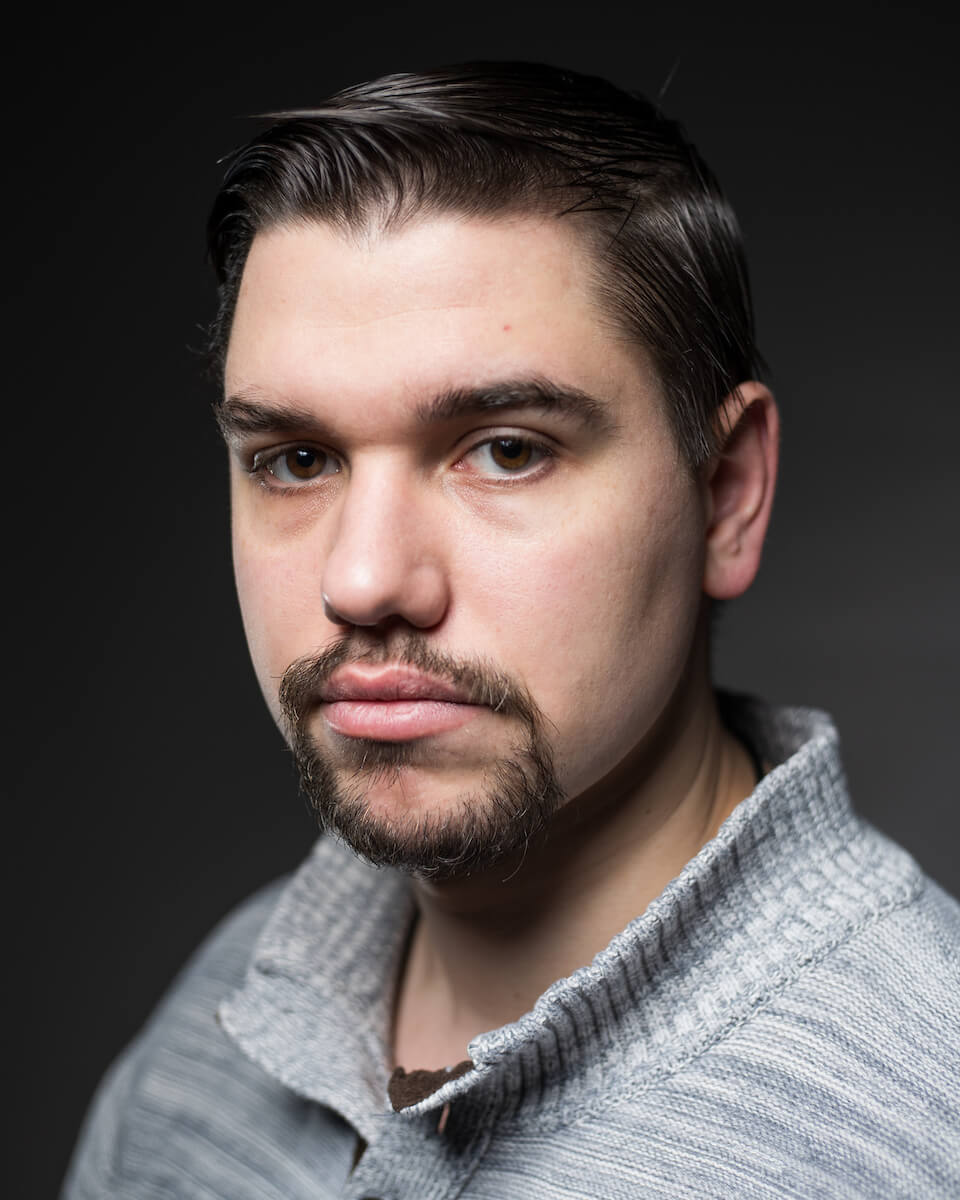
John’s Story
As a respiratory therapist, we play the most vital role in terms of a patient’s breath, because if a patient can’t breathe, they die. In our role, there aren’t any drugs that can make the lungs take a deeper breath or expand the lungs. No drugs can make a patient breathe like what we do for our patients. There aren’t a lot of people in the community who can truly sympathize with what respiratory therapists deal with. I’ve cared for patients where afterward, I need to find a closet, shed a tear, and then move on with my work.
Sometimes it takes a crisis to recognize the true power of good communication. Case in point: the stresses of COVID gave rise to a new innovation at CentraCare – the “Medical Officer of the Day” or MOD.
The benefits of the MOD have already transformed CentraCare’s delivery of healthcare, and has wide-ranging implications for use far beyond the scope of the pandemic.
We took a couple of our most senior hospitalists and put them on the phone for the day answering questions and building relationships.”
mark matthias, md, Vice President of Medical Affairs
Medical Officer of the Day
Innovating through crisis
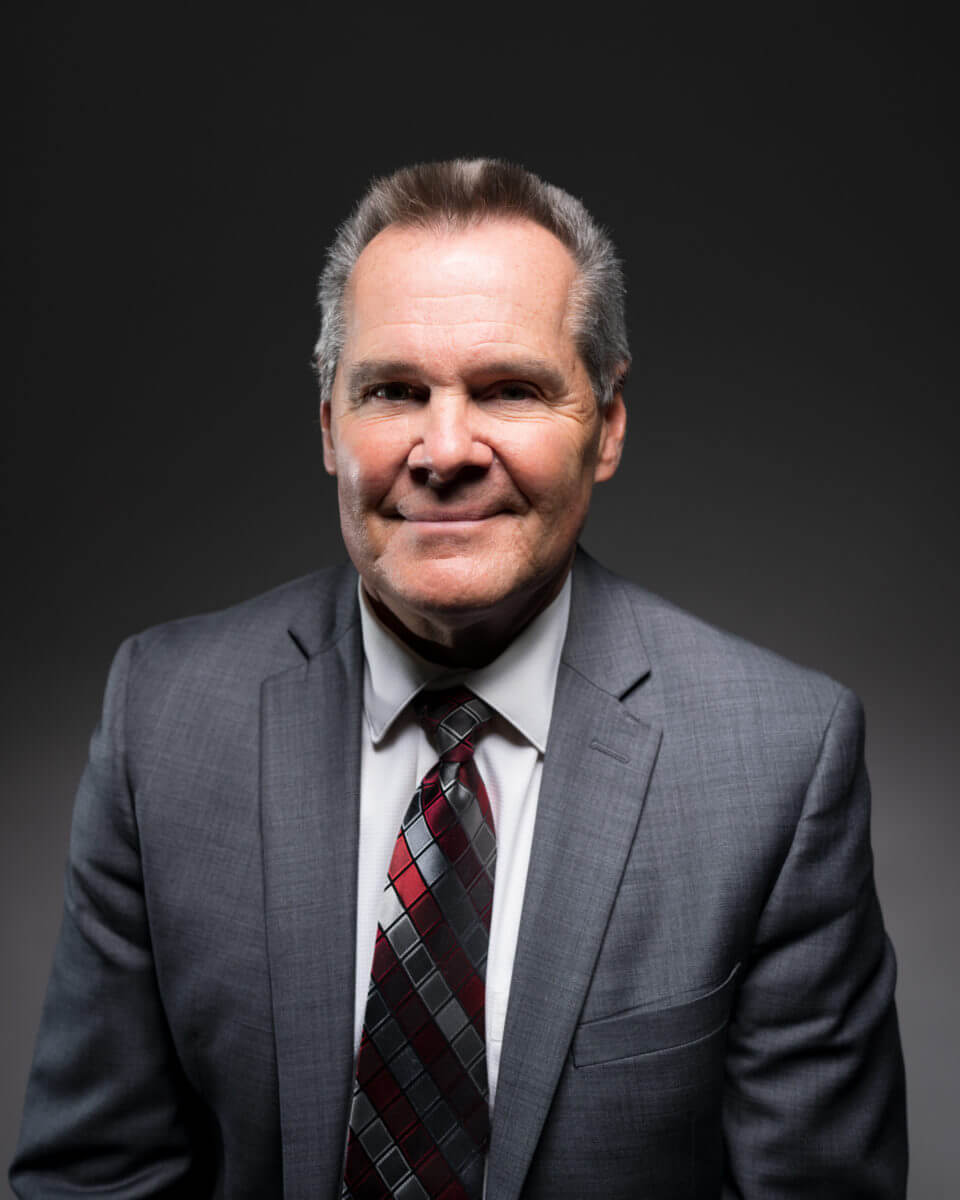
Mark’s Story
It sounds really bizarre to say, but there are a number of things that we will be thankful to COVID for. The “Medical Officer of the Day” is one of them.
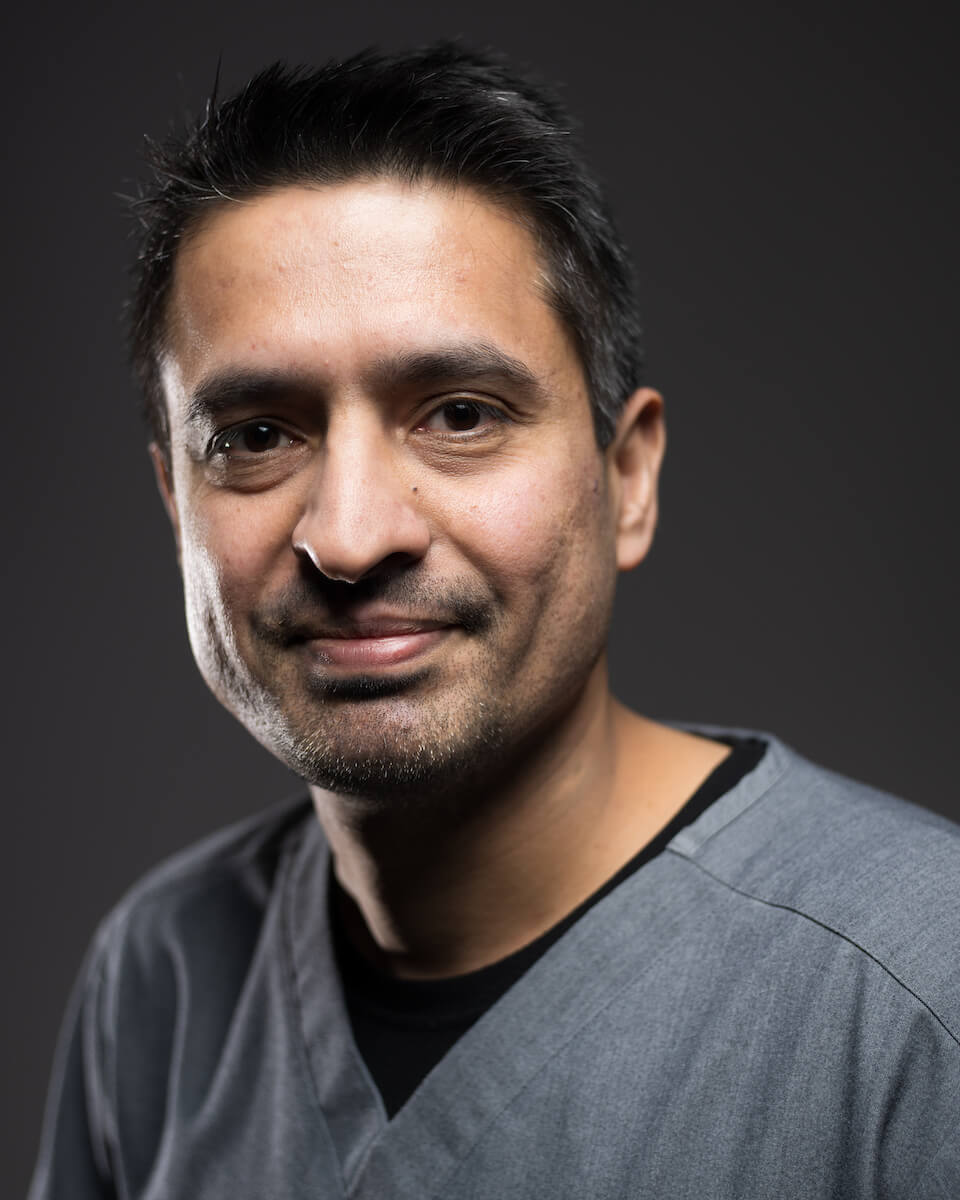
Ari’s Story
Our regional health care teams are an example to us all, honestly. I mean, the word hero in this context has been used for three years. But they embody that and I have no hesitation using that phrase for them.
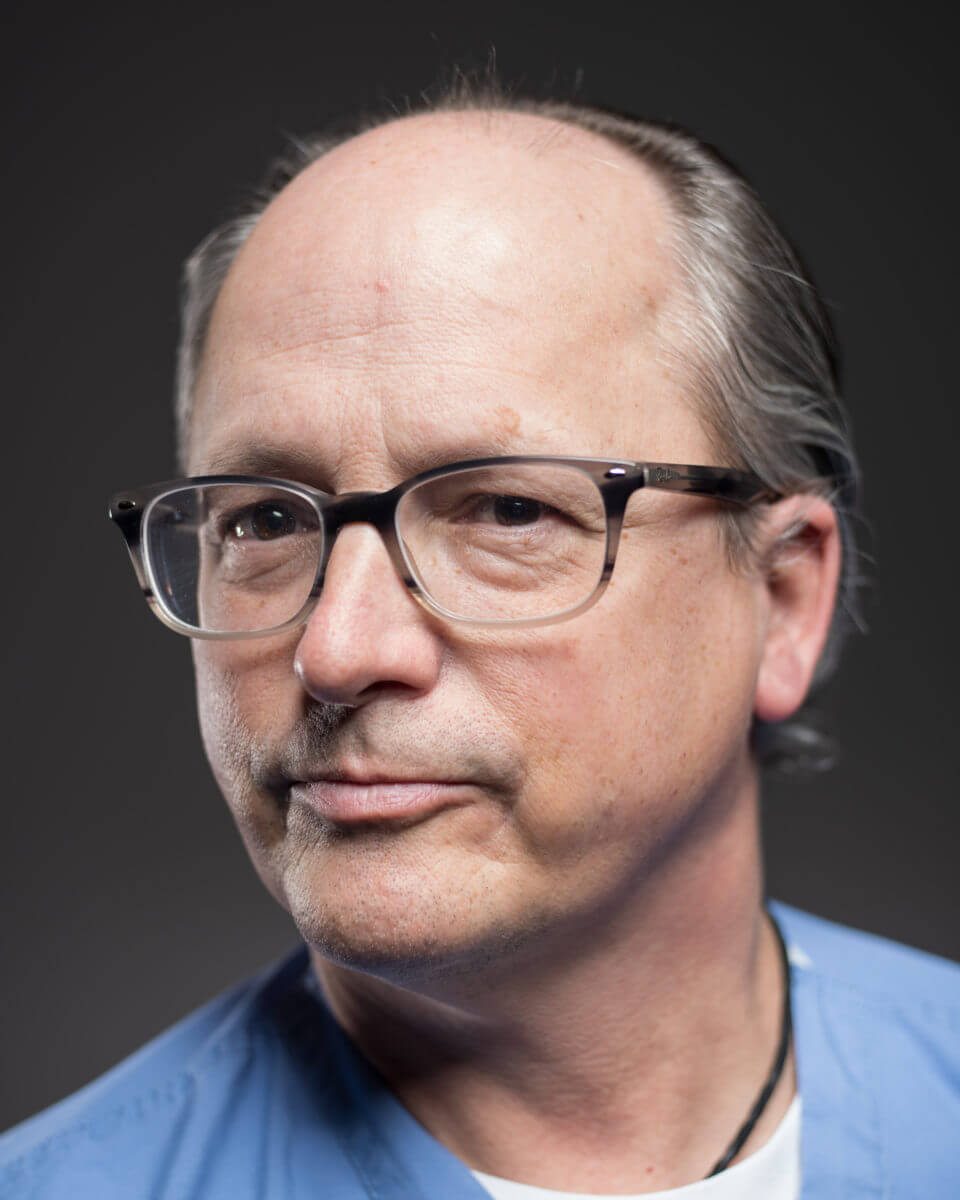
Chris’ Story
When you talk about high reliability organizations and leadership, you’ve got blunt-end leadership and then sharp-end leadership. Sharp-end is the actual hands-on work, the people who are going to see the effects of a decision that’s made. Blunt-end is where executives are at. And blunt-end leadership is not unimportant, but it is definitely more supportive.
W
hen Bobbie Bertram, APRN, APP Practice Director, looks back on the last couple years, she feels mixed emotions. “I’m doing better today,” she says with a smile. “Of course, when you see an uptick in the COVID numbers, it’s disappointing, but at the same time you feel more prepared now.”
One reason she feels more prepared is because of the organization’s establishment of the physician and APP labor pool, which early in the pandemic took a look at the people resources – capabilities and skill levels of providers – in order to redeploy staff to meet the needs of patients.
I think often about the people who were in it day in and day out – the nurses, intensivists, and respiratory therapists.
Bobbie Bertram, APRN, APP Practice Director
Physician and APP Labor Pool
It takes a village
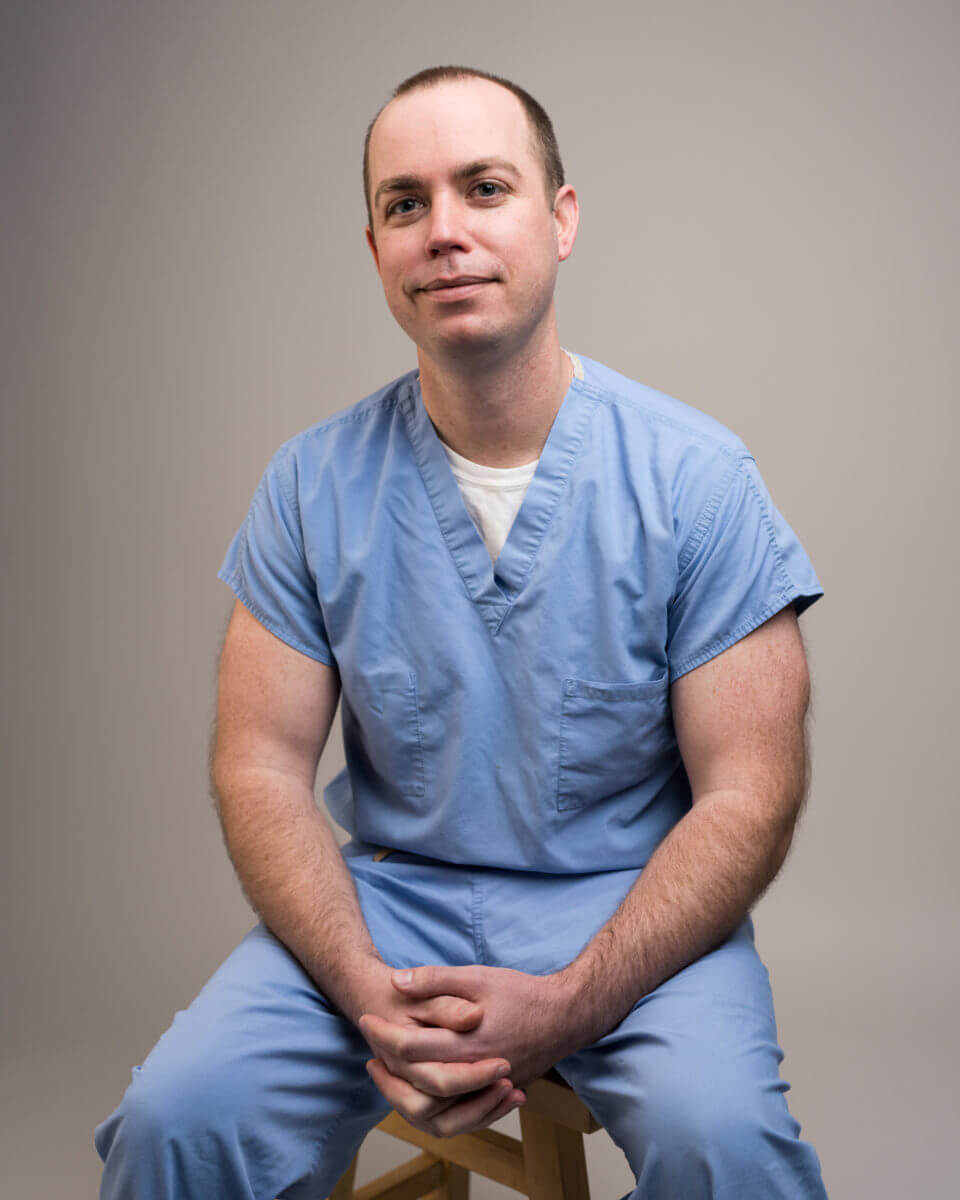
Tim’s Story
I’ve been working critical care for just over two years now. Prior to that, I worked primarily in pulmonology in the clinic. When I took this intensivist position, I had been here for maybe a few weeks and then we started hearing about COVID.
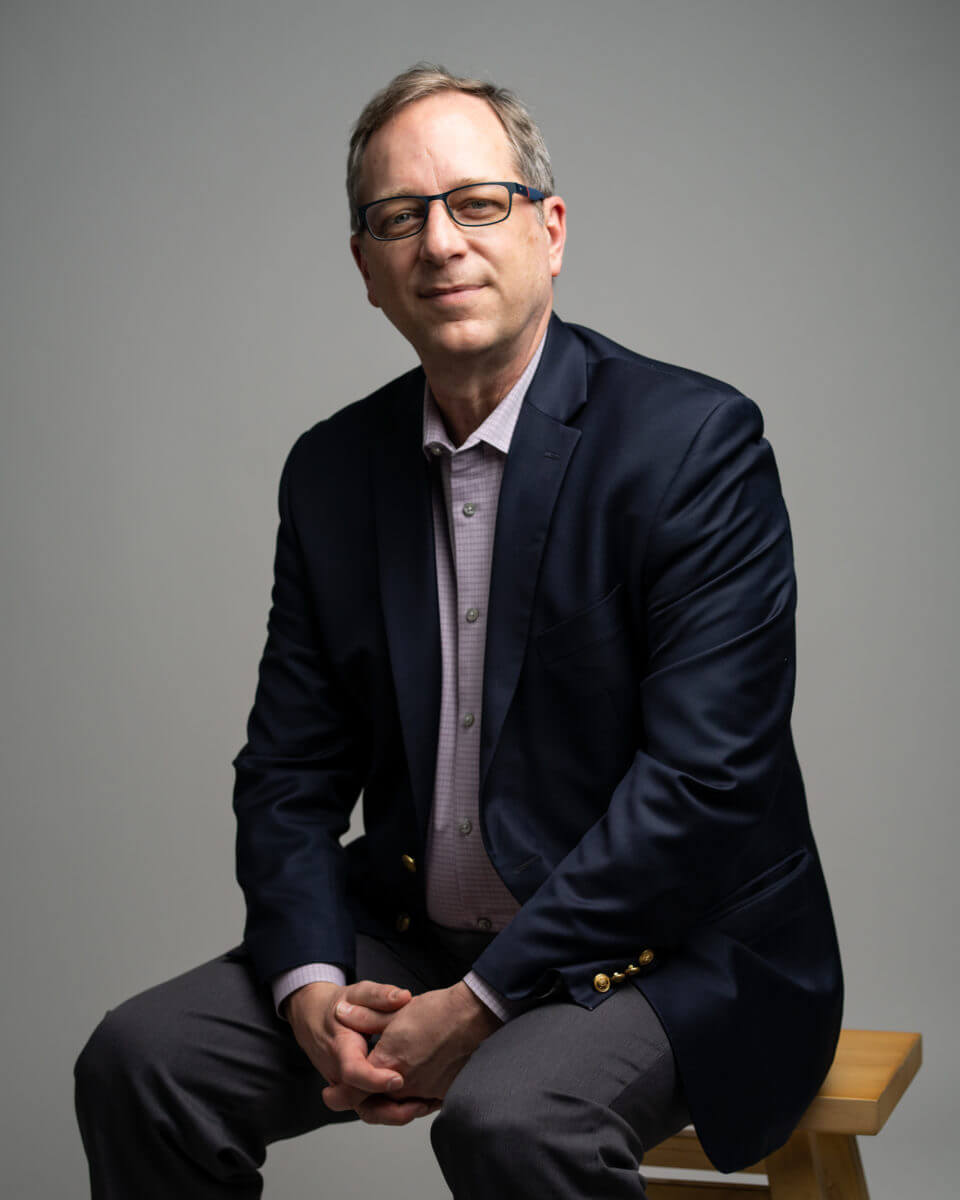
Joe’s Story
I think I came to this job and this organization at an important time, and one that has allowed me to bring some experiences that I didn’t think I’d need during this unprecedented time that we’re working.
Emergency Department (ED) staff are, by nature of their work, used to dealing with acute medical situations of every kind. But they’re not typically with any one patient for very long. The surges of COVID patients changed that, as beds filled up in the rest of the hospital.
We are the only place in the hospital that can’t say ‘no.”
Kurt Belk, ED Medical Director
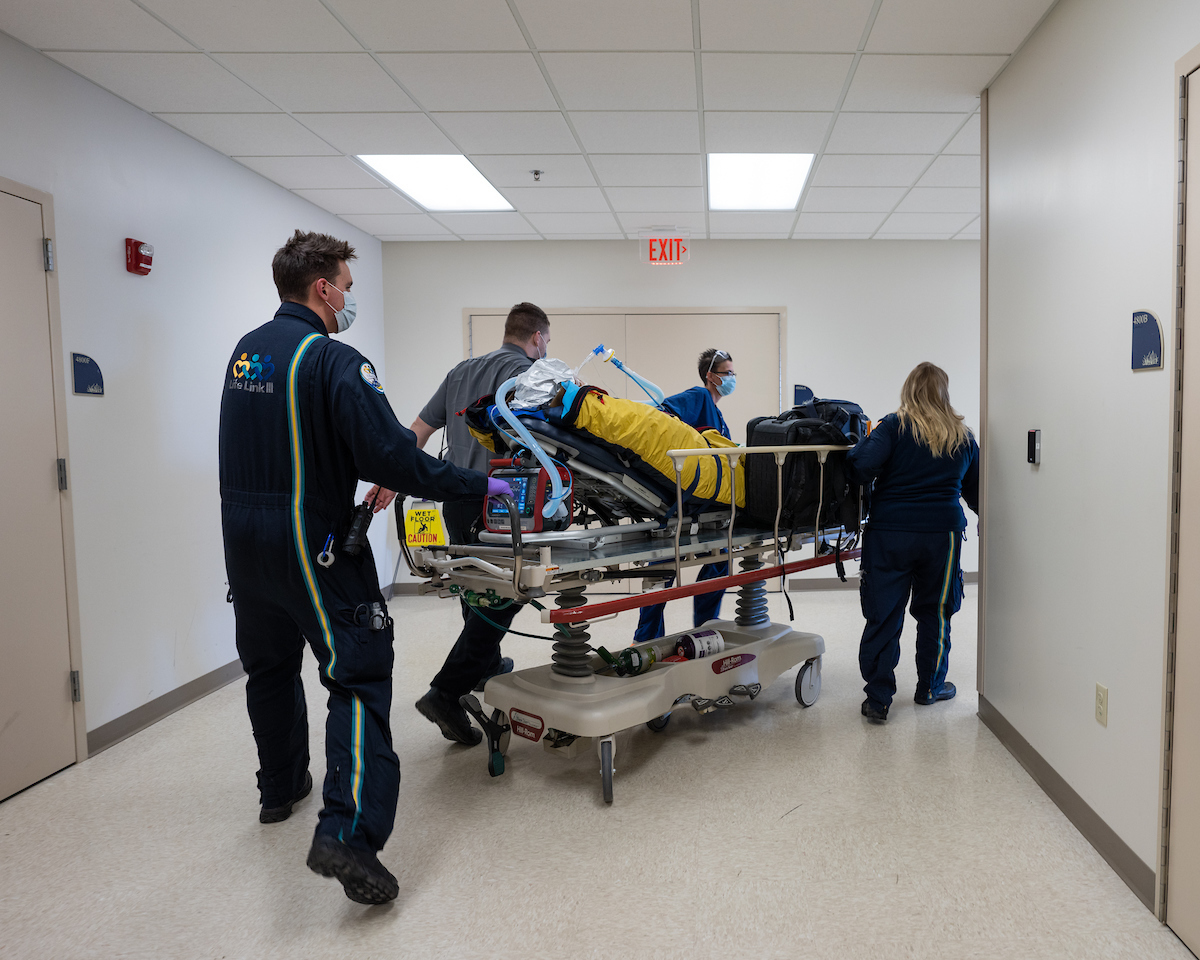
Emergency Departments
The front door during a crisis
“In the last two years, things changed exponentially faster than anybody could have ever guessed,” said Jessica Tindal, RN and core charge nurse in the ICU at St. Cloud Hospital. “Somehow you just roll with the punches.”
And that’s what the ICU team did through all the ups and downs and seemingly endless surges.
I had worked in the ICU since 2000 in different capacities, but I don’t know that I was ever going to be prepared for what was ahead of us.”
Michelle Gamble, Director of the ICU
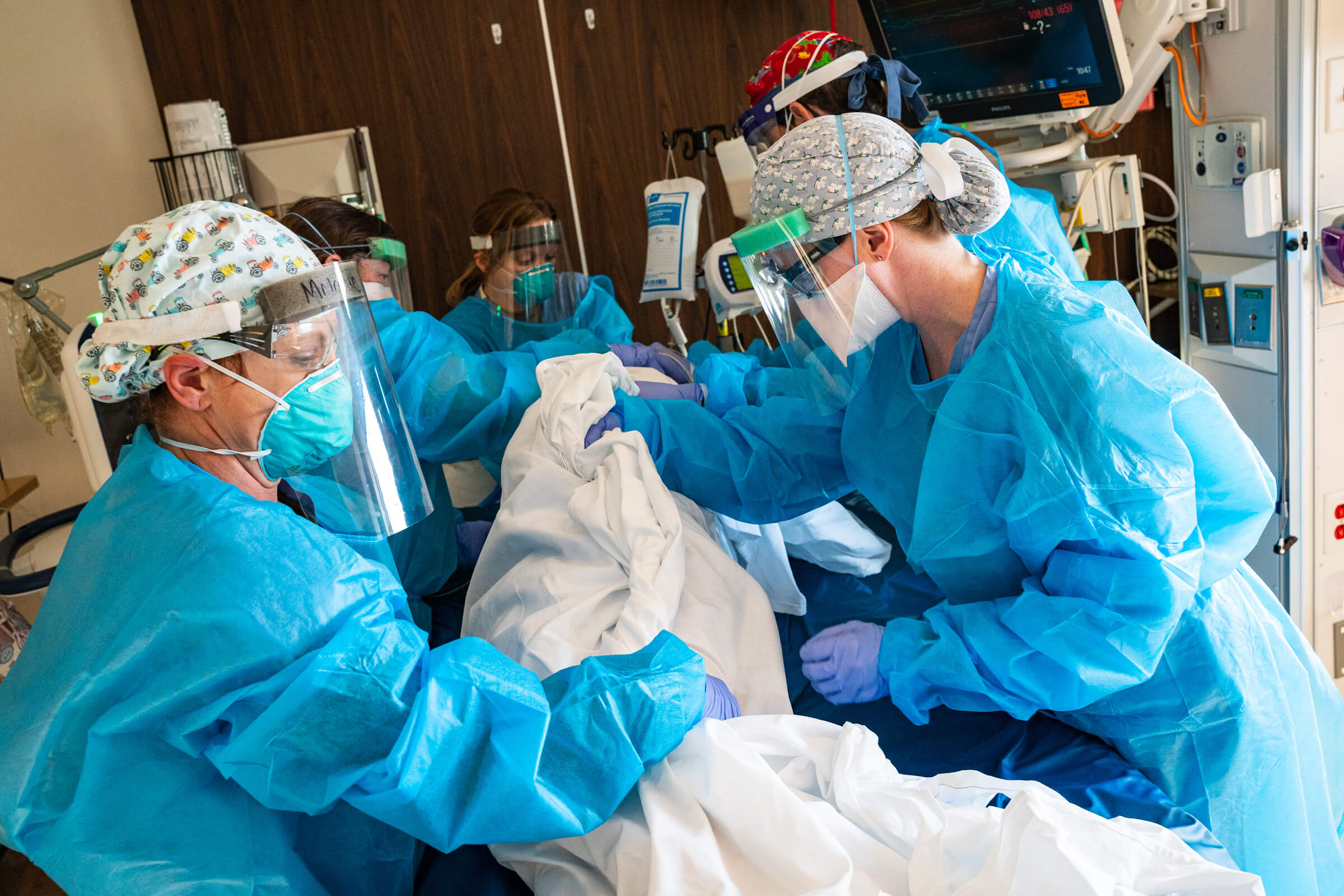
Intensive Care
Adapting to change in the ICU
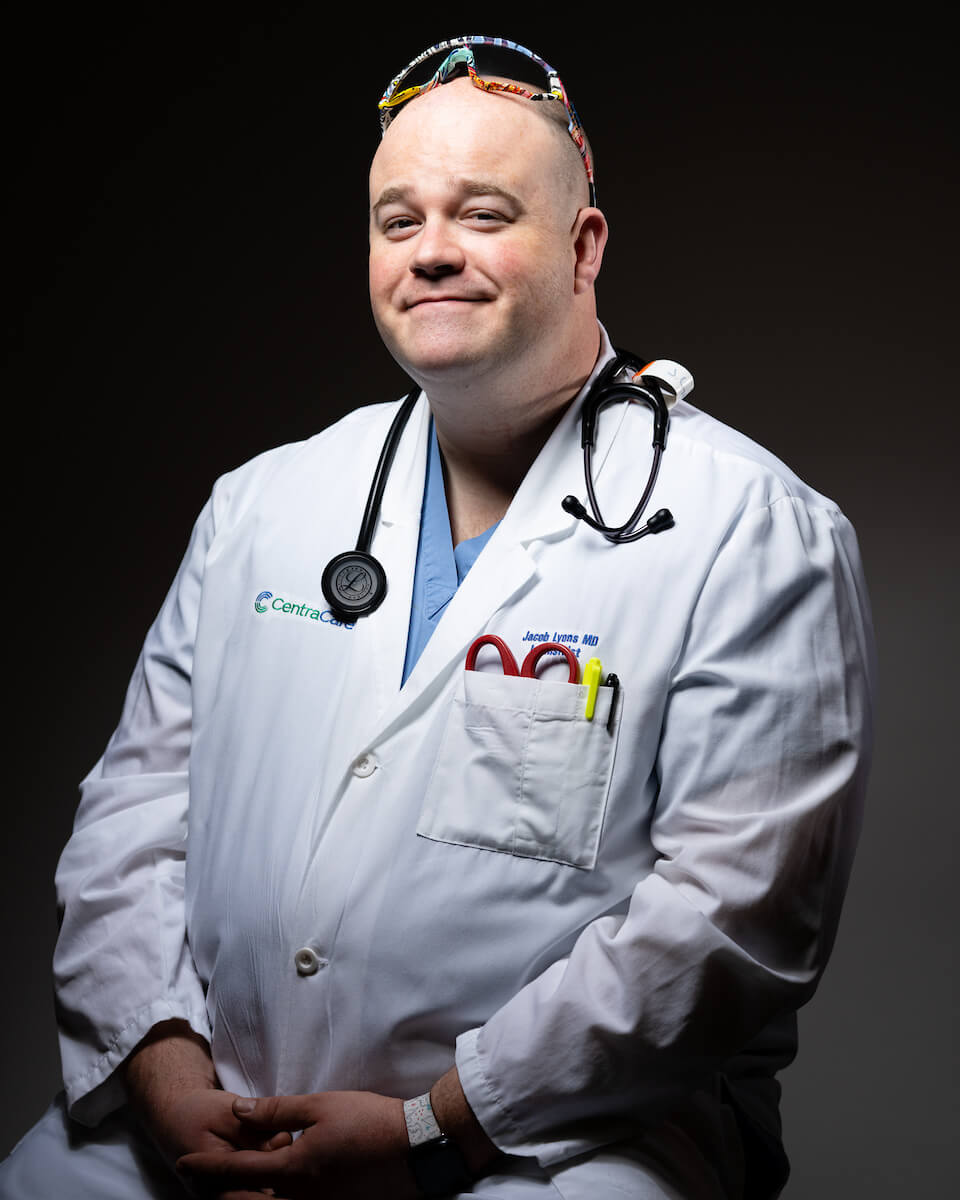
Jack’s Story
Any conversation about a person’s imminent dying is challenging. That conversation is made markedly worse when it can’t be held in person, when you can’t read body language, when you can’t see facial expressions and pause appropriately to let a person get a tissue.
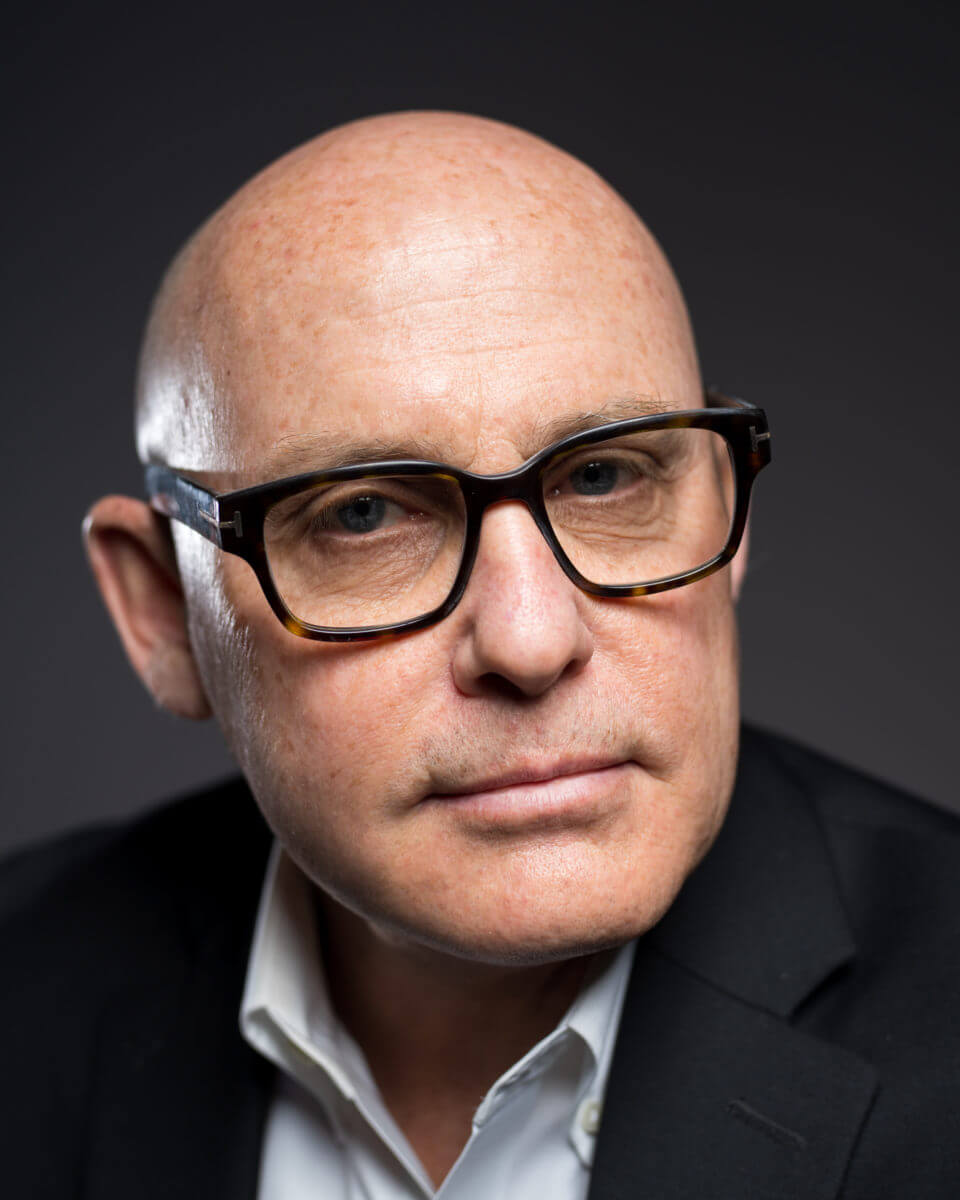
Tom’s Story
Working through COVID was a situation where people could say, ‘I see what needs to be done. And I’m gonna do whatever I can to step up and take care of these people with my partners, and just do the right thing.’ It was an amazing thing to behold.
When the pandemic hit St. Cloud Hospital, the “C” in C-ICU suddenly stood for “Cardiac” and “COVID.” Nurses who were accustomed to dealing with angiograms and bypass surgeries had to quickly adapt to PPE and intubating patients.
“The C-ICU was the original COVID ICU when the virus hit,” said Kirsten Skillings, APRN, Director of Inpatient Cardiology.
Cardiac patients were assigned to the ICU so we would send nurses up to the ICU for cardiac care. Between the ICU and C-ICU, we shared staff as needed.”
Kirsten Skillings, APRN, Director of Inpatient Cardiology
C-ICU Nurses
It was life changing
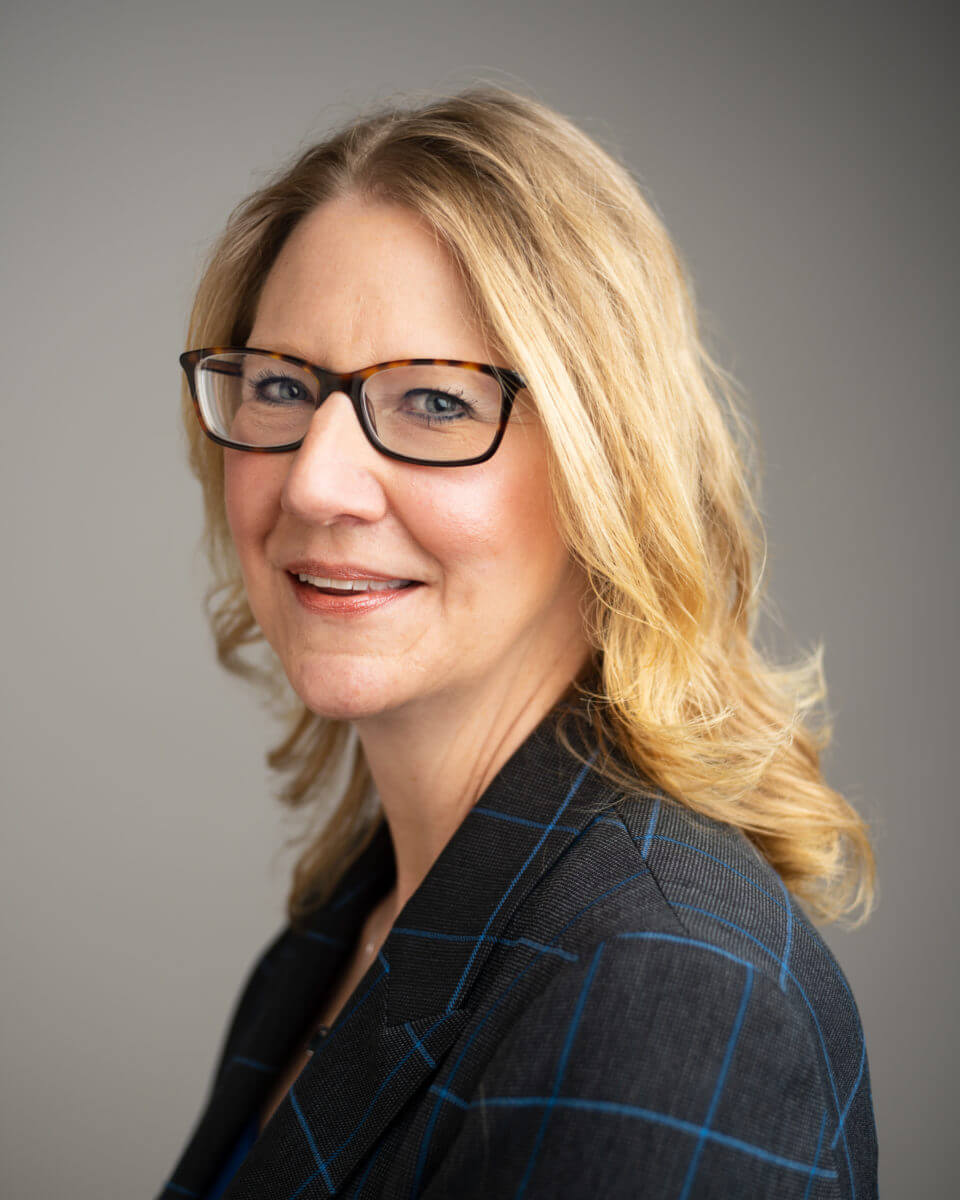
Joy’s Story
What I’m most proud of throughout the pandemic is honestly just how each and every staff member showed up. Every single department was impacted by the pandemic – every individual that works here. And I just am so proud of our people. We could not have gotten through this without each and every one of them.
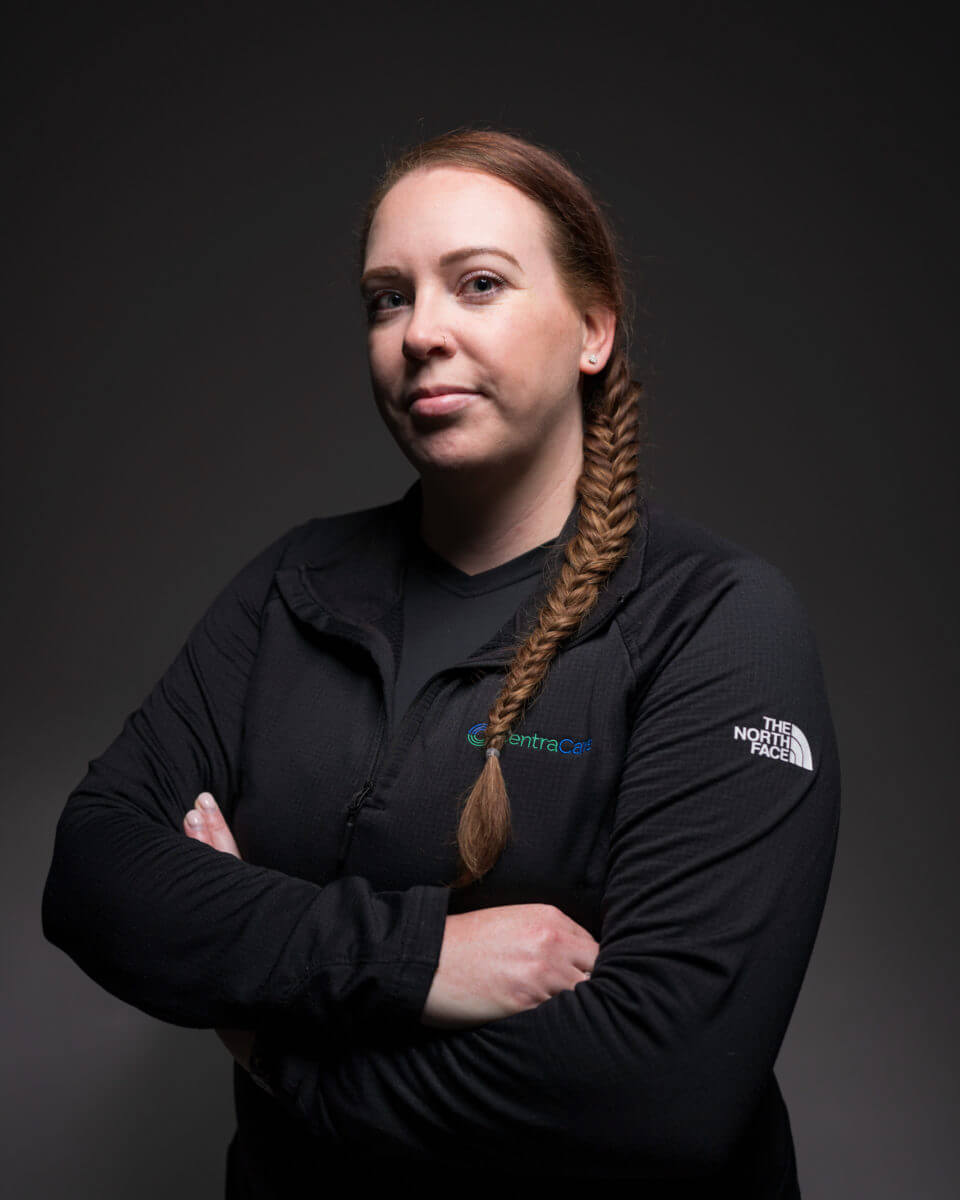
Jodi’s Story
There are some things you just can’t prepare for. You can have all the right staff, you can have all the right things, but you don’t know what those patients are going to bring through the door. We had all these plans coming into the pandemic, and some just got thrown right out the window. And some were like, ‘Okay, we need to do this right now.’
Though Director of Surgery Kayla Dingmann had never been in a bedside role, she stepped up to fill in as a nursing assistant in fall of 2021.
On an Operations and Intelligence (O&I) call, hospital leaders had urged anyone able to be trained to get onto the floor.
When hospitals had to pivot for the COVID-19 pandemic, the surgery unit slowed down dramatically with elective surgeries – most of what the unit does at CentraCare – canceled, and few emergency surgeries happening. Instead of running 29 full booked rooms, they might only have 10 cases a day.
It was an amazing experience and I will say it’s humbling.”
Kayla Dingmann, Director of Surgery
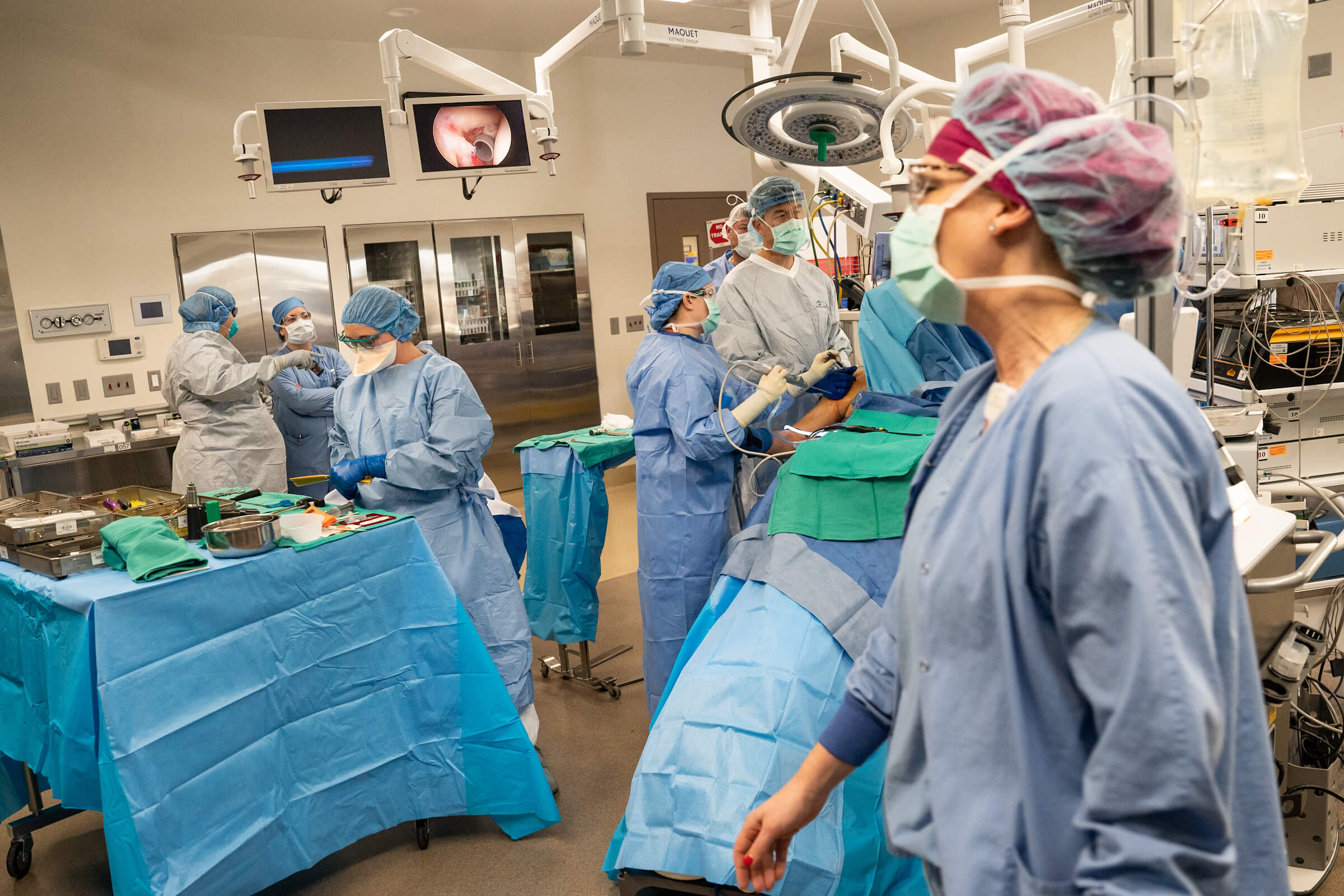
Stepping Up
Serving the greater good
When news of COVID first emerged in January 2020, CentraCare implemented an Incident Command System to deal with the anticipated influx of patients and the many other unknowns the pandemic would bring. This management structure helped provide a standardized approach to emergency response and connected teams in ways that allowed for quick decisions and better support to frontline staff.
Our priority was giving our staff transparent information, up-to-date information…”
craig henneman, Executive Director of Surgical Services
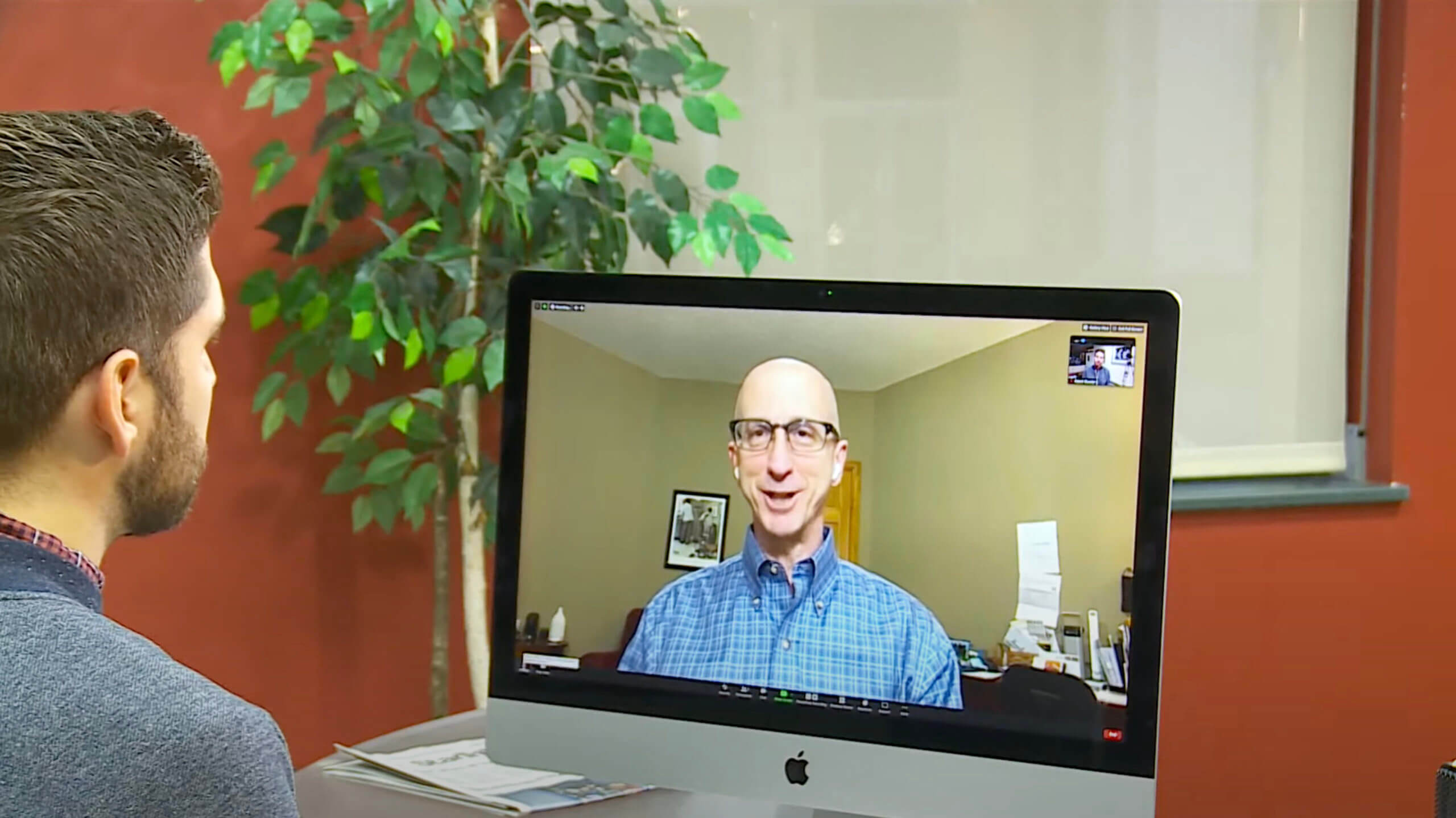
Incident Command
Empowering people to think beyond their own department
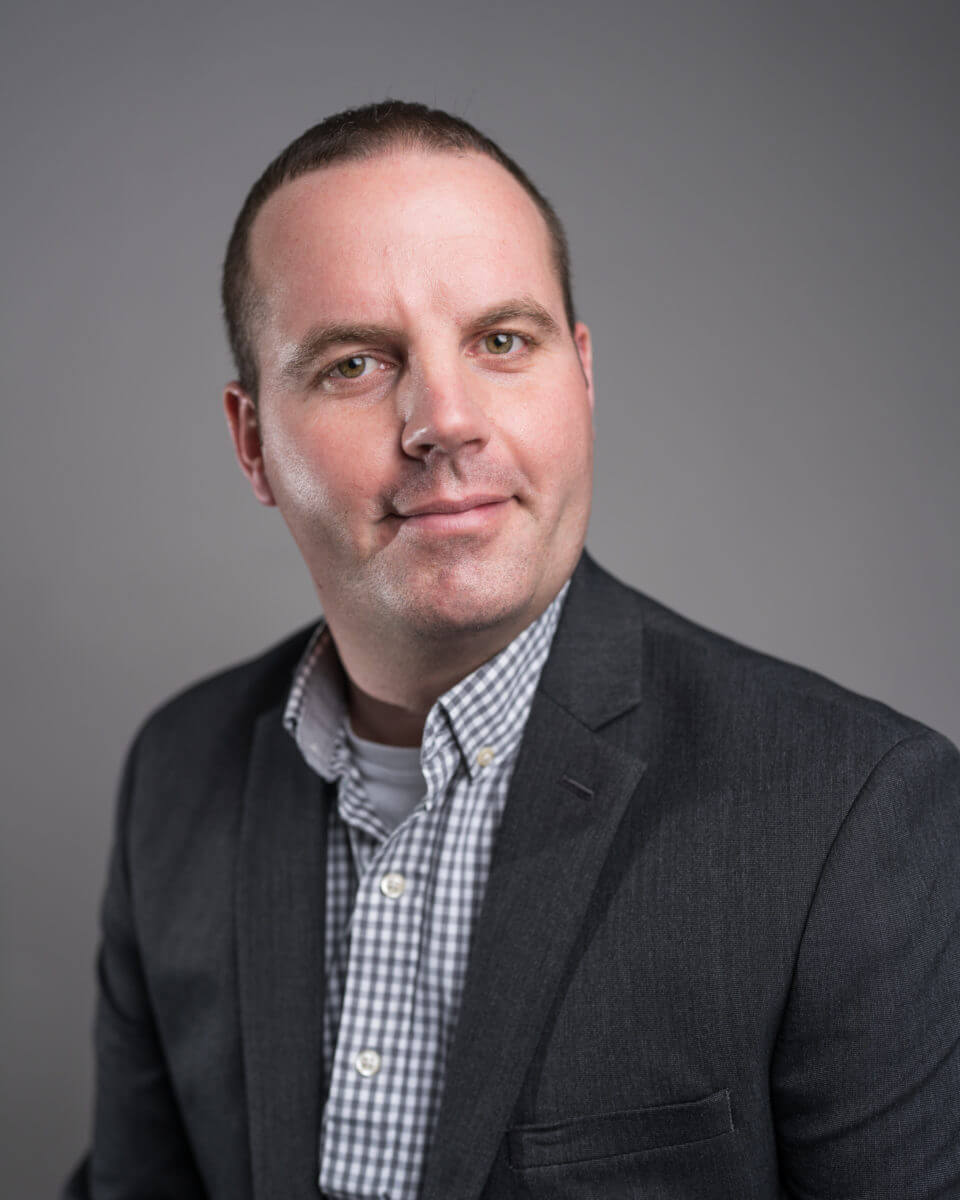
Craig’s Story
What did I learn about our teams? Resiliency. It was a two-year long cycle where staff picked up many extra shifts oftentimes outside of their department.
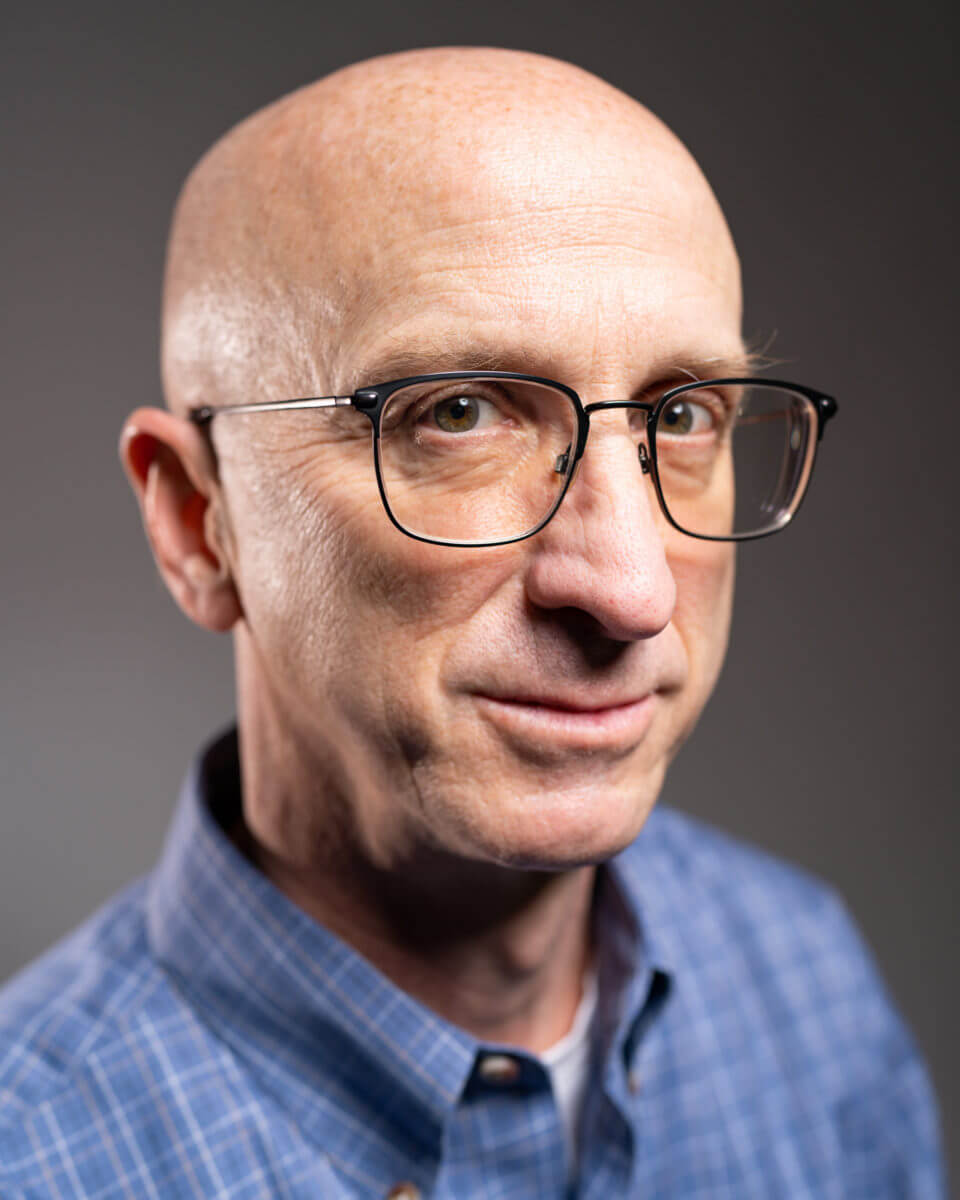
George’s Story
Boy, when we band everybody together, oh my gosh can we move mountains. And we really helped impact our employees, our community and in essence, we demonstrated what we can do across the state during the pandemic.
During the various pandemic surges, the Logistics department – a team that’s largely behind the scenes – was counted on to transport supplies wherever they were needed despite many obstacles.
The team’s work is on-site and in-person, so when staffing challenges hit, they had to prioritize
It was quite impressive how far our department bent to get the job done.”
Clint Wenger, Sr. Director of Support Services and Logistics
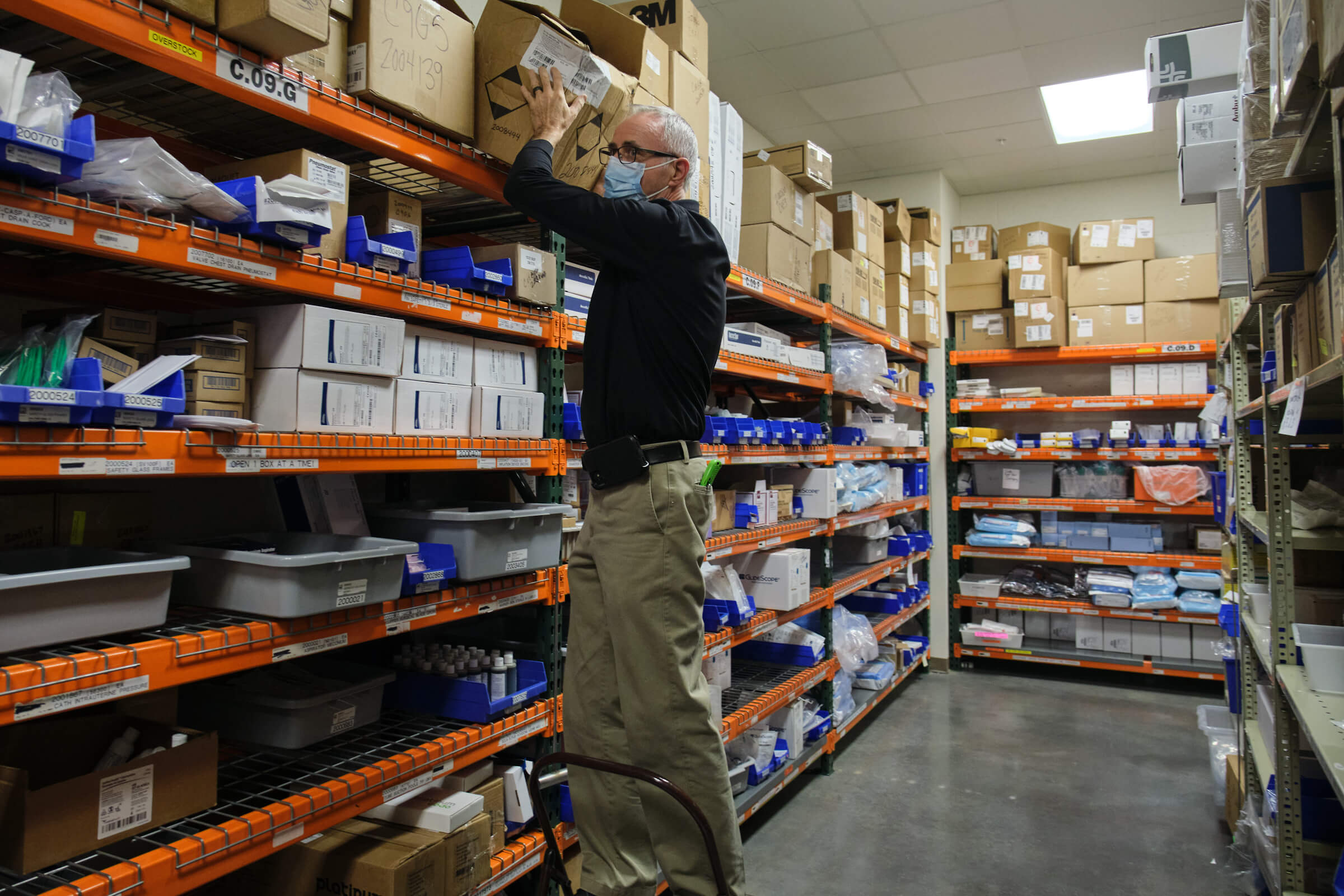
We Didn’t Break
The Logistics team delivered
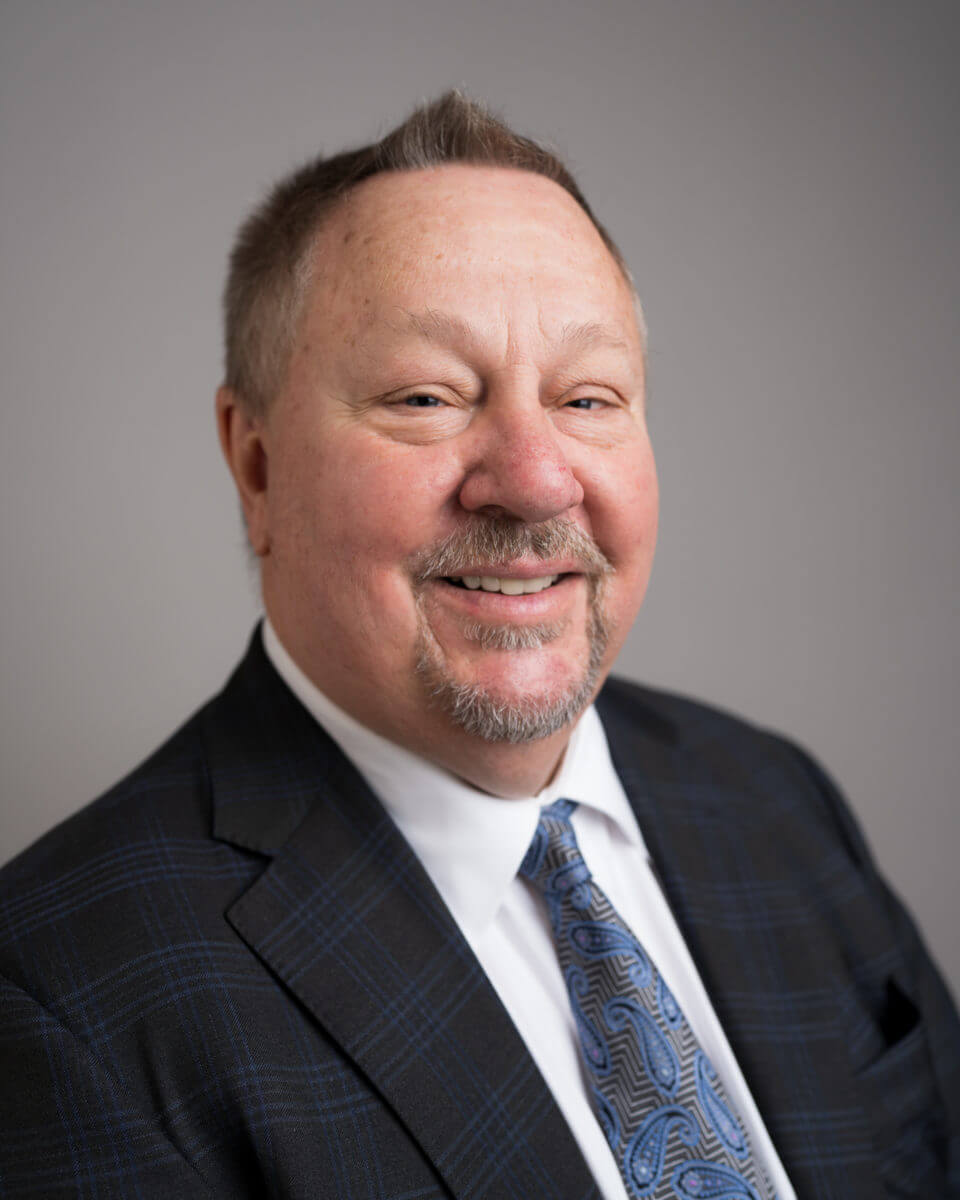
Ken’s Story
The pandemic shined a bright spotlight on health care and it illuminated major fault cracks in how America thinks and goes forward into the 21st century. That’s what I’m worried about. I’m spending a lot of time talking with leaders about that. How do we not circle the wagons, but embrace a broader conversation about what America in the 21st century looks like?
“We want Supply Chain to be like WiFi,” says Alyssa Kangas, Sr. Director, Contracting and Procurement. “That’s the vision – like when you walk into a building and your computer just connects to the internet. We want our caregivers to have what they need at their fingertips when they need it, without even having to think about it.”
That vision faced a number of challenges the last two years. Not only was the team in the middle of implementing an entirely new ERP system when the pandemic hit, but global supply chain disruptions have turned everything upside down.
We know there’s a patient at the end of every decision that we make. I’m so grateful to be part of Supply Chain because of that.”
ALYSSA KANGAS, SR. DIRECTOR, CONTRACTING & PROCUREMENT
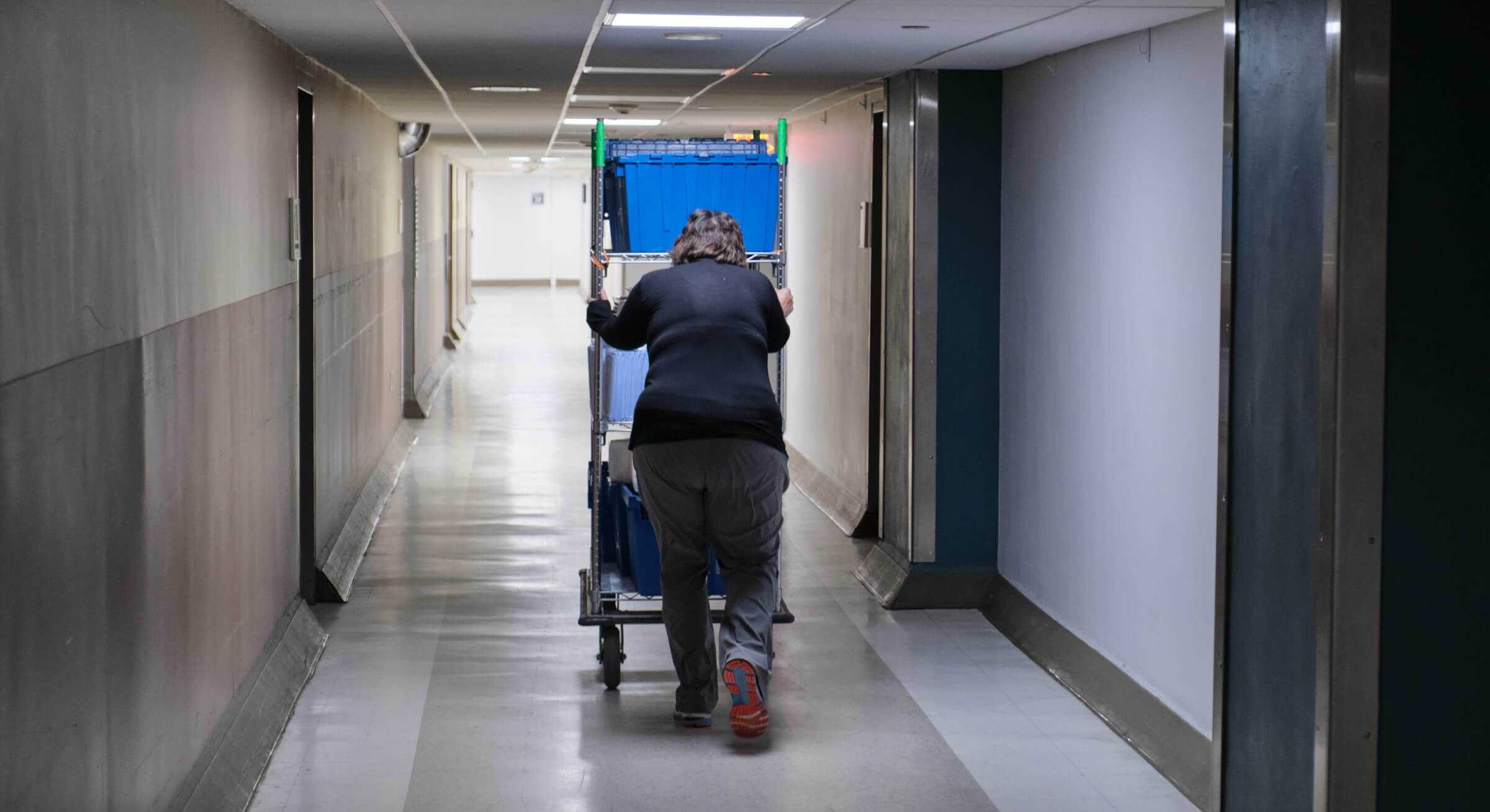
Supply Chain
There’s a patient at the end of every decision

Just Breathe: COVID Stories from the Heart of Minnesota in the Words of Caregivers.





